| Japanese PE | diameter(mm) | 8 strand PE | diameter(mm) | 4 strand PE | diameter(mm) |
|---|---|---|---|---|---|
| PE 0.6 | 0.128mm | 22 lb | 0.120mm | 8 lb | 0.130mm |
| PE 0.8 | 0.148mm | 23 lb | 0.140mm | 10 lb | 0.150mm |
| PE 1.0 | 0.165mm | 25 lb | 0.160mm | - | - |
| PE 1.2 | 0.185mm | 30 lb | 0.180mm | 15 lb | 0.180mm |
| PE 1.5 | 0.205mm | 35 lb | 0.200mm | - | - |
| PE 1.7 | 0.218mm | 40 lb | 0.220mm | - | - |
| PE 2.0 | 0.235mm | 45 lb | 0.230mm | 20 lb | 0.230mm |
| PE 2.5 | 0.260mm | 50 lb | 0.260mm | - | - |
| PE 3.0 | 0.285mm | 55 lb | 0.280mm | 30 lb | 0.280mm |
| PE 3.5 | 0.310mm | 60 lb | 0.300mm | - | - |
| PE 4.0 | 0.330mm | 65 lb | 0.330mm | 40 lb | 0.330mm |
| PE 5.0 | 0.370mm | 75 lb | 0.370mm | 50 lb | 0.360mm |
| PE 6.0 | 0.405mm | 90 lb | 0.400mm | 65 lb | 0.410mm |
| PE 7.0 | 0.435mm | 100 lb | 0.430mm | 80 lb | 0.430mm |
| PE 8.0 | 0.470mm | 110 lb | 0.470mm | 100 lb | 0.460mm |
| PE 9.0 | 0.505mm | 120 lb | 0.490mm | - | - |
| PE 10.0 | 0.535mm | - | - | - | - |
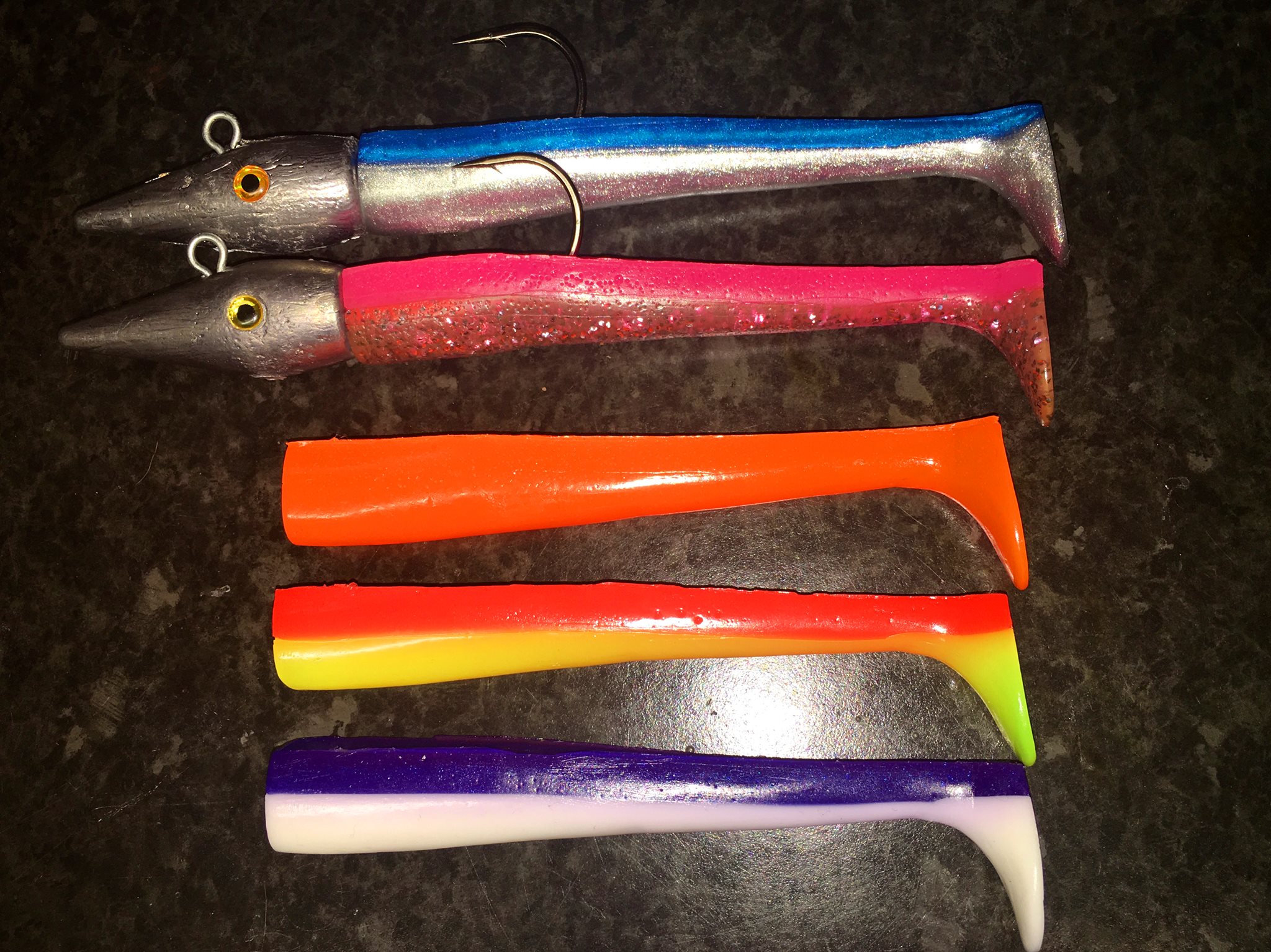
WIGHT WRECKER
The Wight Wrecker is a 240g jig head matched with a 160mm Tail.
This was designed primarily for Wreck Fishing, but also for Bass on the deeper banks and also for Norway Coalfish / Halibut.
Total weight of head and tail = 277g.
Jig Heads can be made with 8/0, 9/0 or 10/0 (photos are 10/0) as per personnel preference.
Jig Heads Separate:- £2.75 each
Tails Separate:- £2.00 each
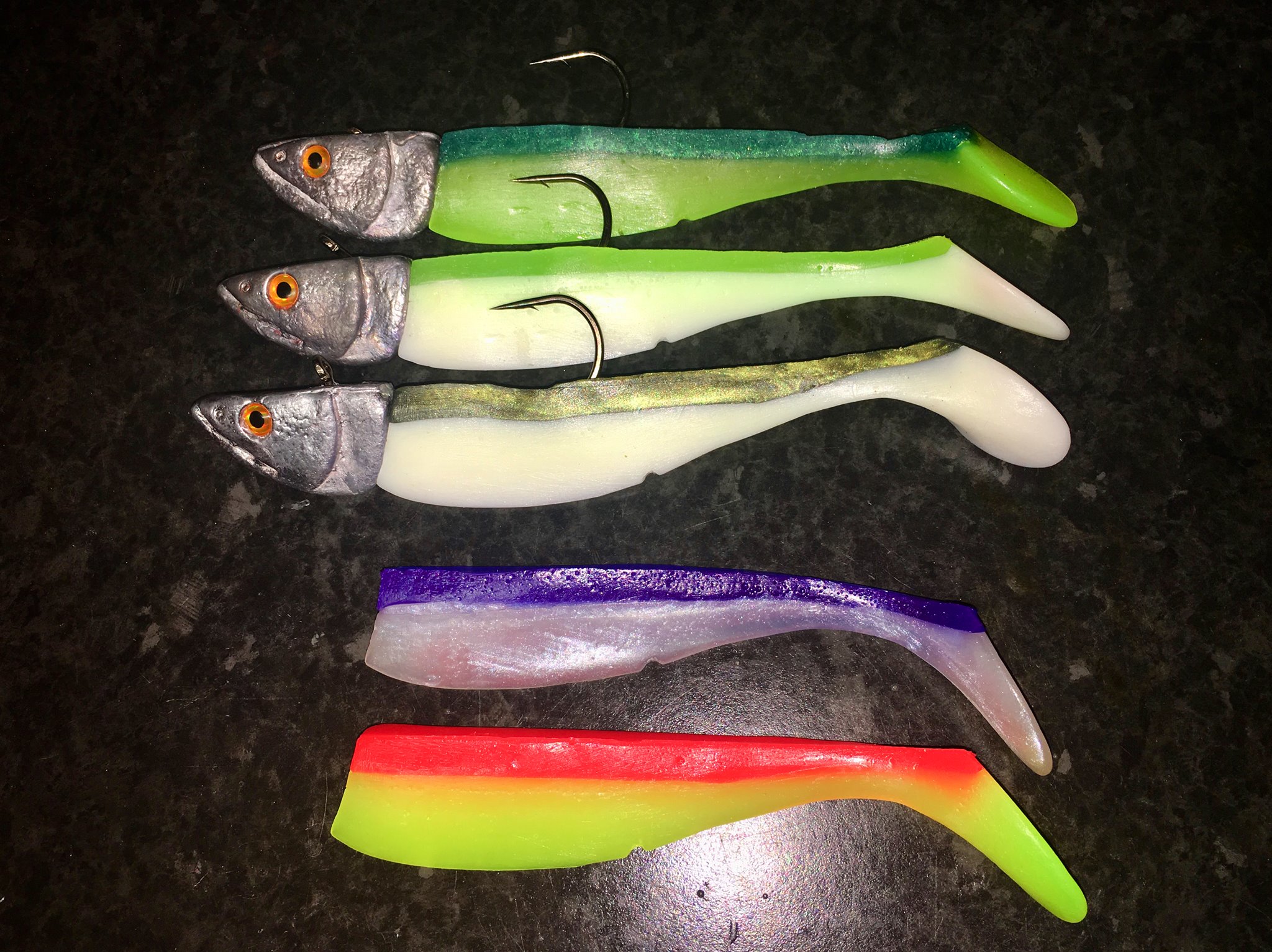
WIGHT’IN
The Wightin is a 130g Jig head matched with a 165mm shad tail.
The shad body is slim-line in profile, with a good sized paddle tail.
Designed for fishing vertical for Bass, Pollack and Cod.
Jig Head £2.00 each
Shad Body £1.50 each
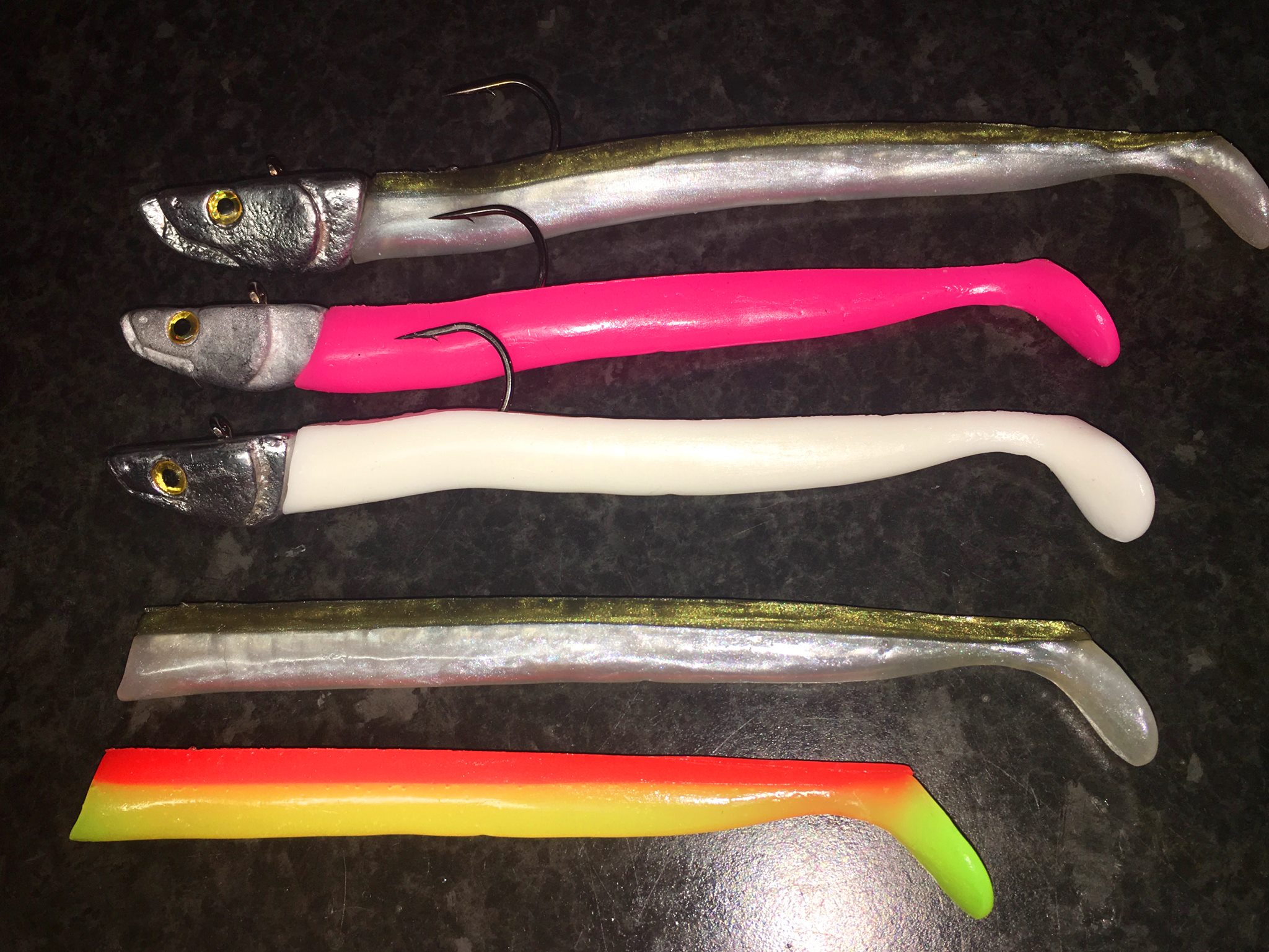
SUPER LAUNCE
The best way to describe our new Super Launce is Fiiish Crazy Eel with a paddle tail.
The tails are made in two sizes 180mm & 210mm and have an amazing action.
They are designed to fit our Slim Sandeel Heads in 90g, 110g and 130g but will also fit all types of head (Savage Gear, Xorus etc)
Designed for fishing vertical for Bass, Pollack and Cod.
Jig Heads 90g, 110g & 130g: £2.00
180mm Super Launce Tails £1.50
210mm Super Launce Tails: £1.75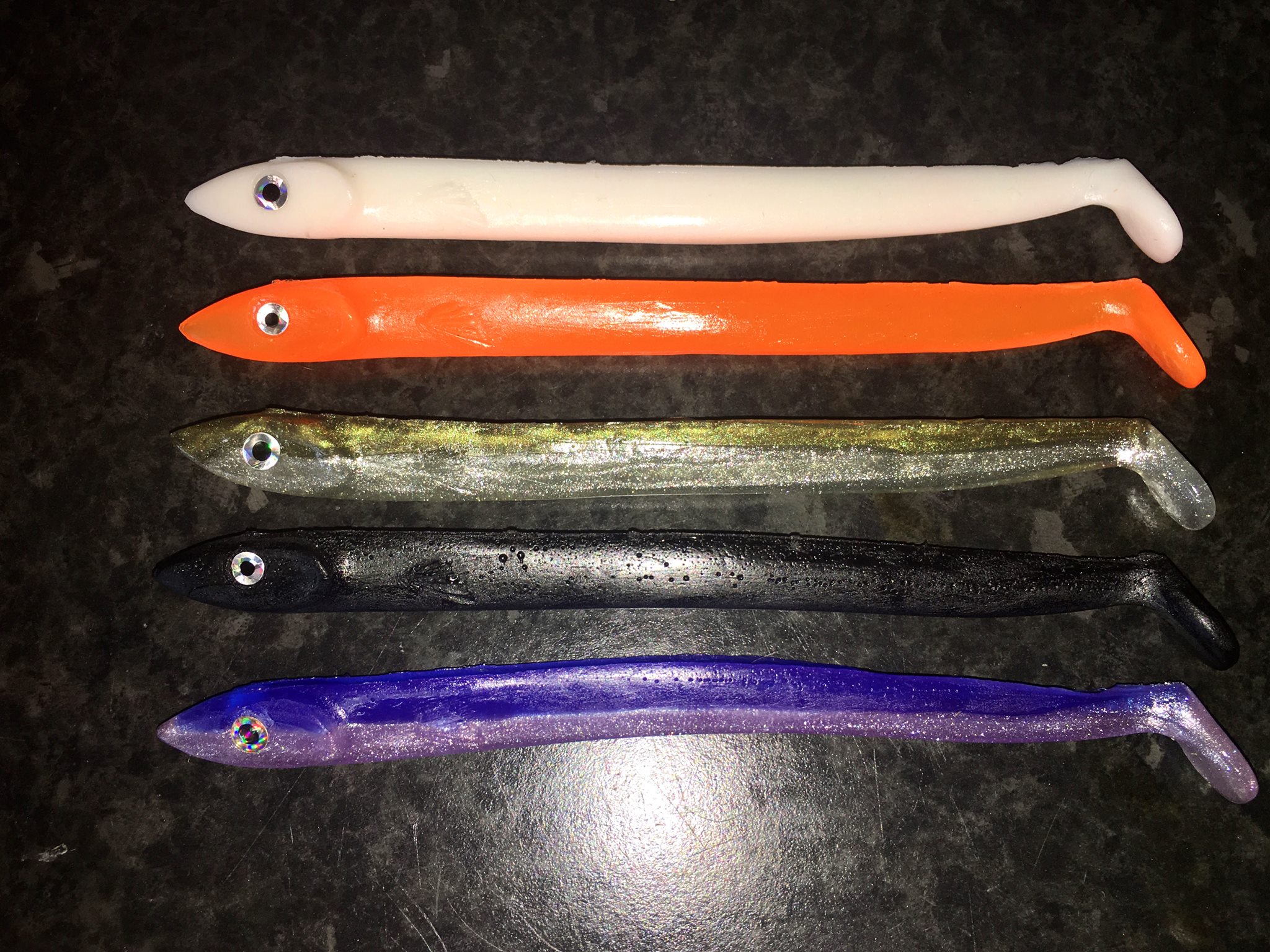
LIVELY LAUNCE
This is a 165mm sandeel/launce imitation lure. The small paddle tail gives off a subtle, but great little action.
Designed for fishing ‘flying collar’ style, and deadly for pollack/bass any many other species.
These lures weigh approx 12g.
£1.00 each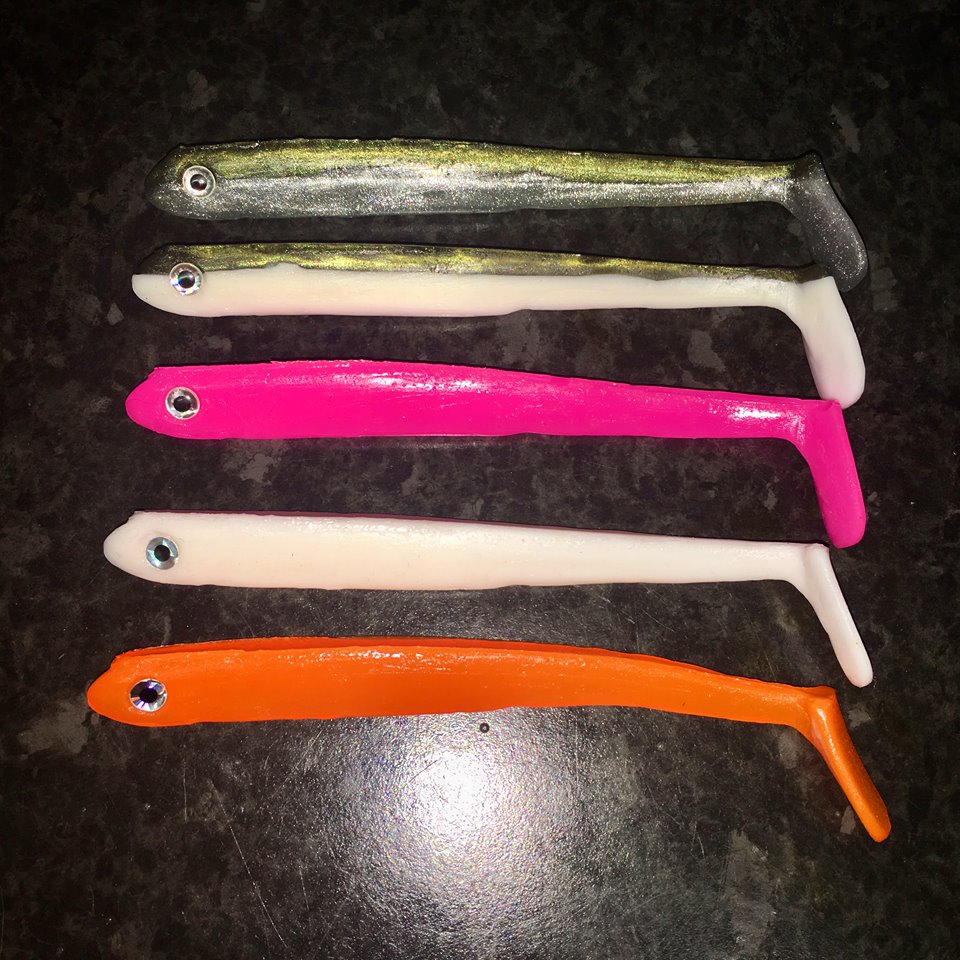
PADDLE TAIL SPRAT
This is a 155mm small bait fish / shad imitation. The body is very streamlined in width, and has a nice sized paddle tail which gives a fantastic action.
Designed for fishing ‘flying collar’ style, and deadly for pollack/bass any many other species.
These lures weigh approx 16g.
£1.00 each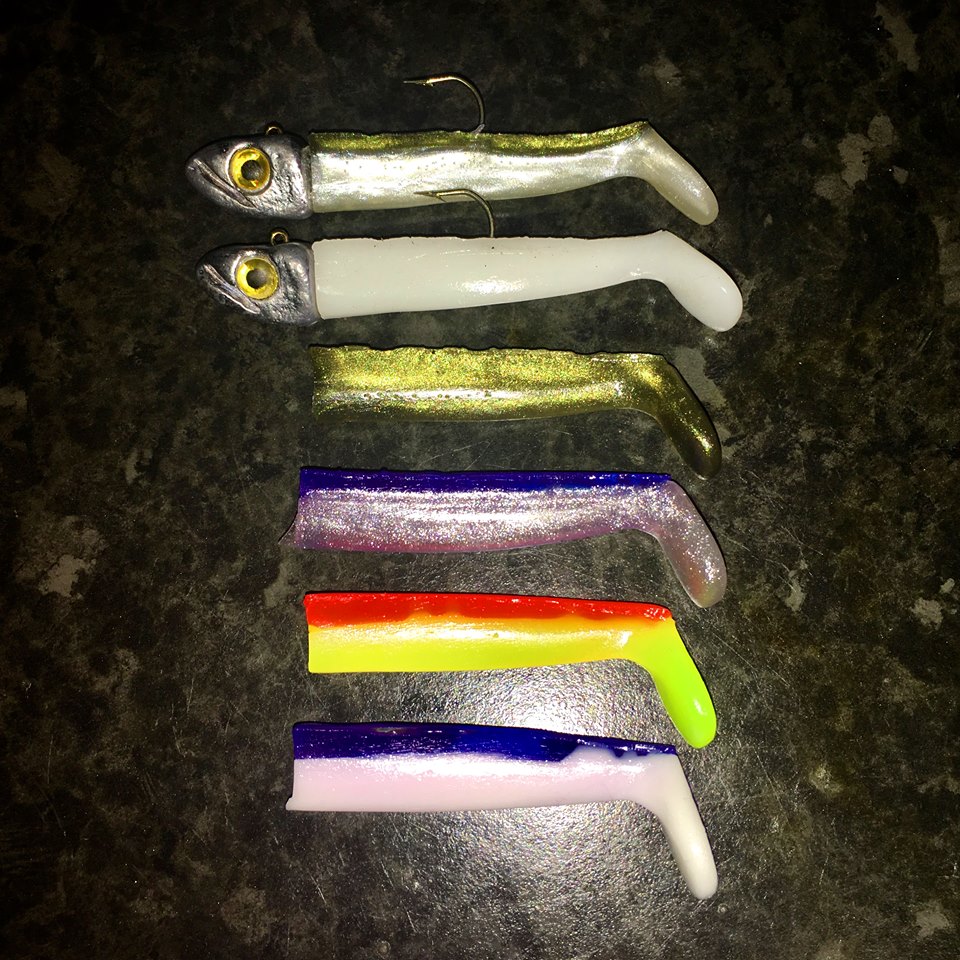
WIGHTBAIT
This is a 65m tail and matches to a 13g jig head.
Small whitebait imitation, designed with wrasse and inshore bass fishing in mind.
Total lure weight with tail = 17g.
£1.50 head tail combo + 1 x spare body
£0.70 Separate Head
£0.50 Separate Tail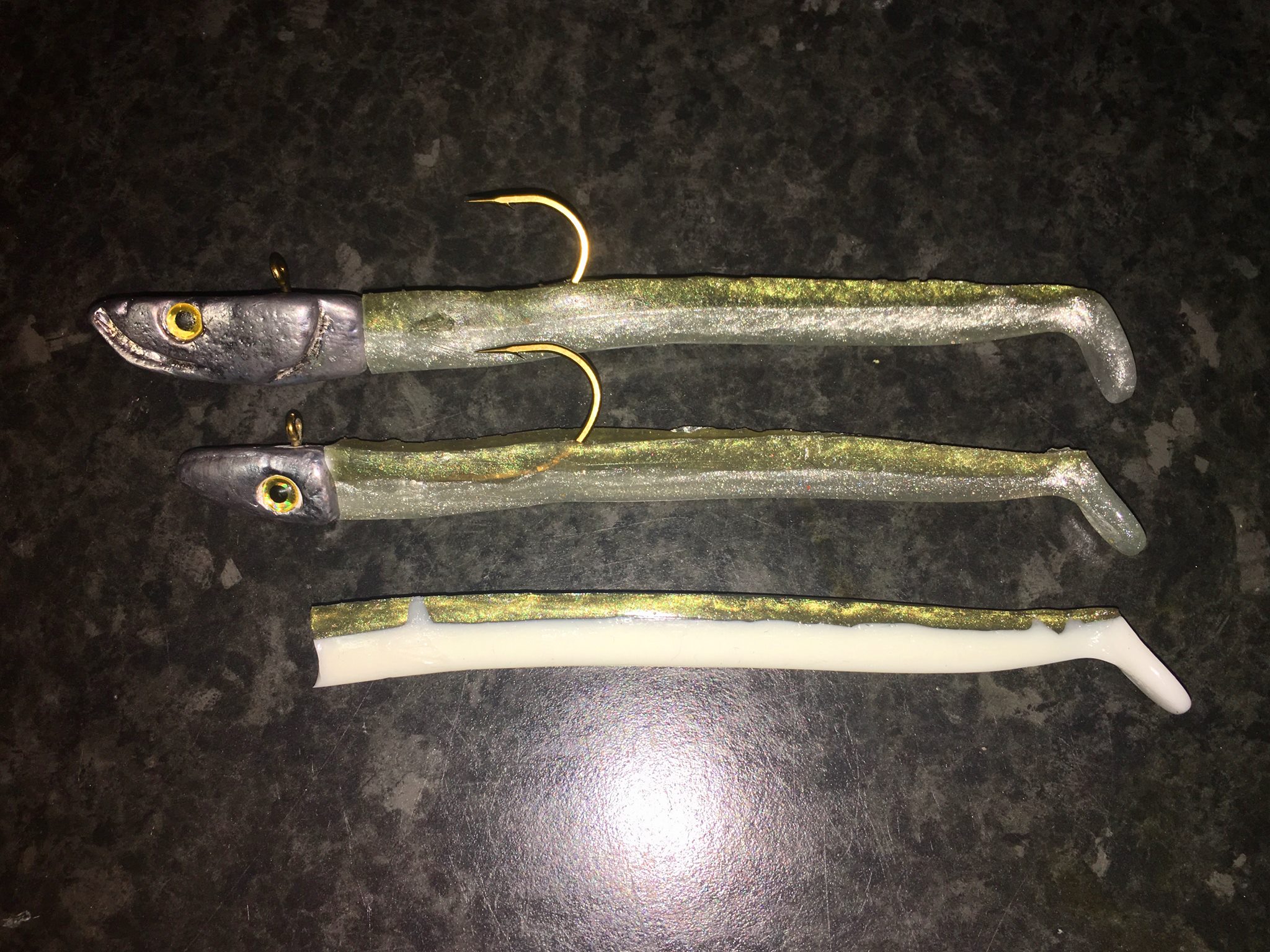
LIVELY LAUNCE JIG
The Lively Launce Jig comes in two size heads - 30g and 70g. These are matched with our lively launce jig tails (140mm).
The lure is nicely streamlined giving a subtle action for more finicky fish. The hook fitted to both jig heads is a Viking 6/0 - nice wide gape.
Jig Head 30g: £1.25
Jig Head 70g: £1.50
Tail: £1.00
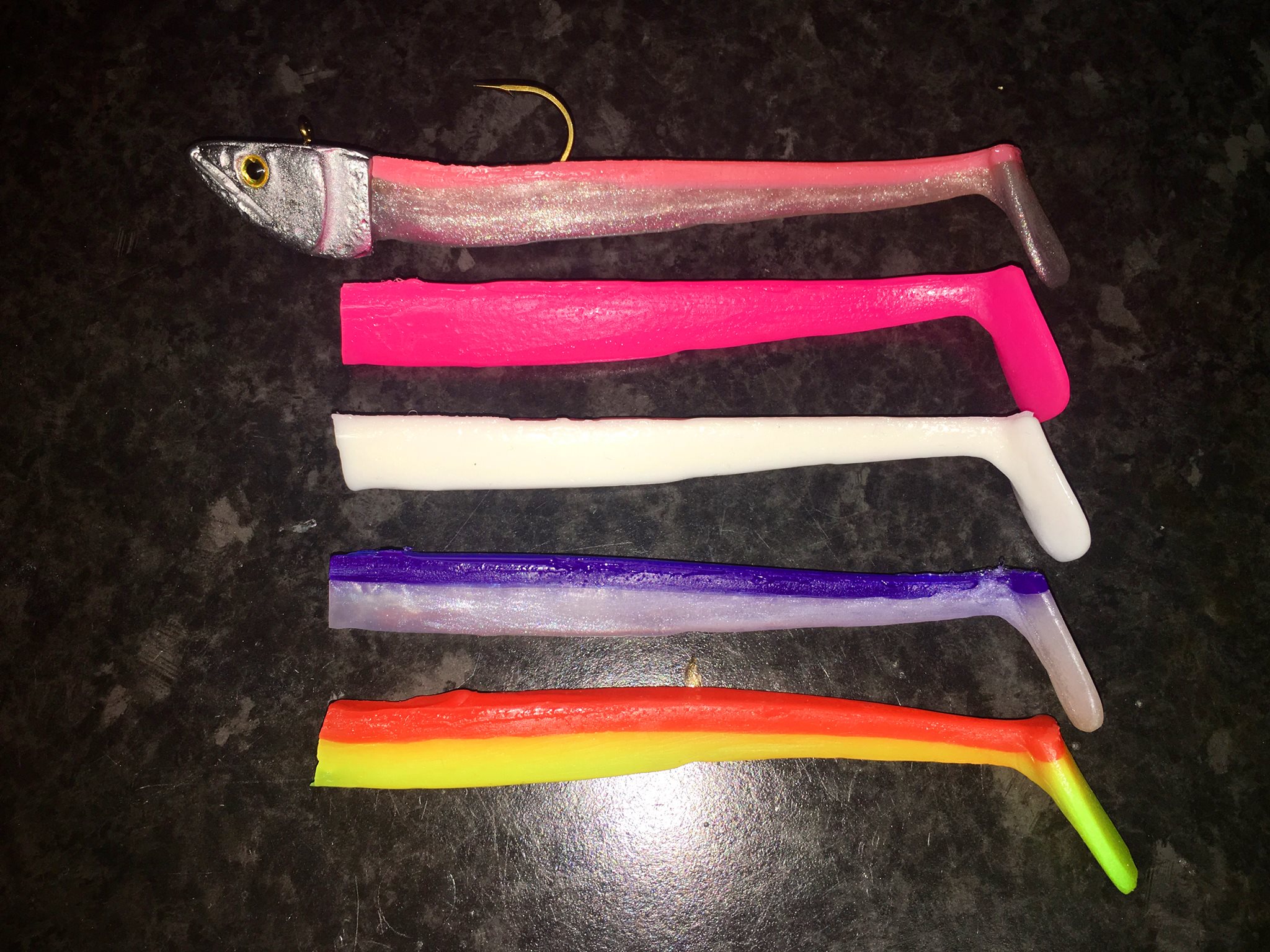
PADDLE TAIL SPRAT JIG
The 65g Paddle Tail Sprat Jig is matched with our paddle tail sprats (140mm).
The lure has a nice sized paddle giving it a great action. The hook fitted to both jig heads is a Viking 6/0 - nice wide gape.
Jig Heads 65g: £1.50
Tails: £1.00
]]>
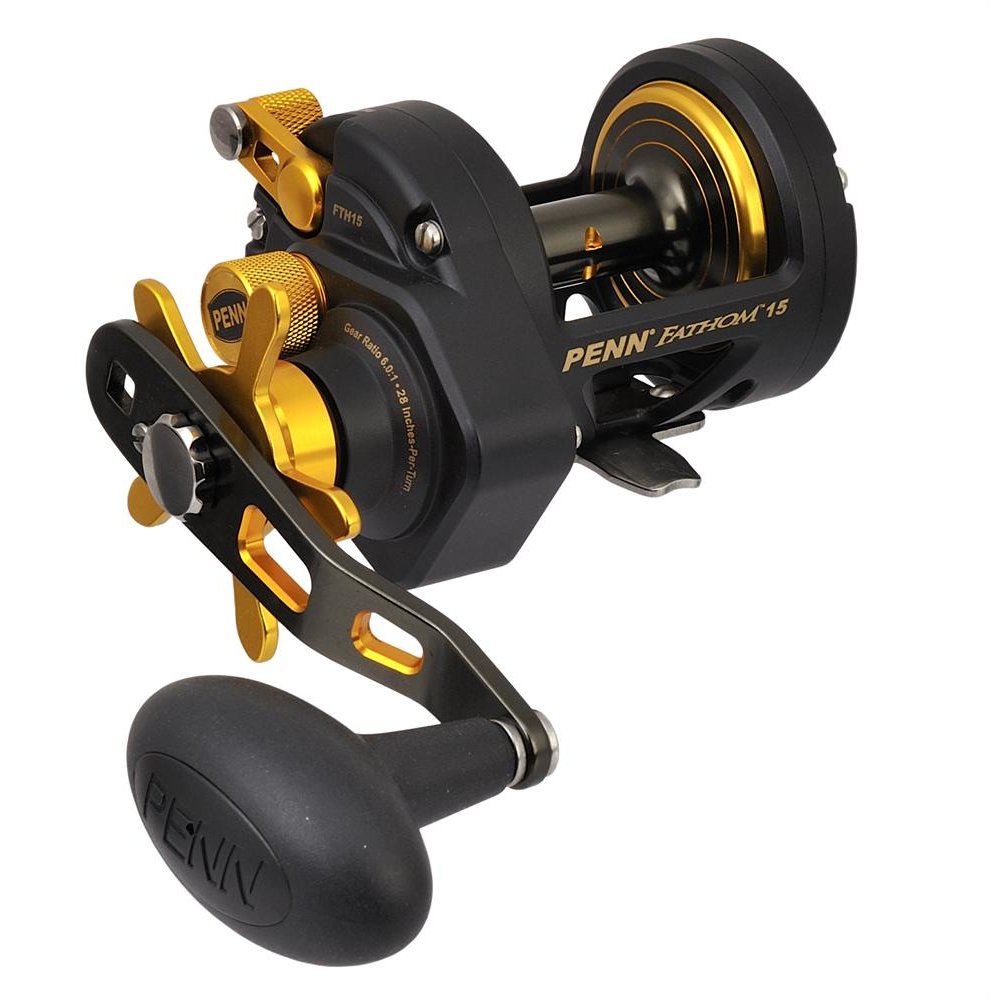
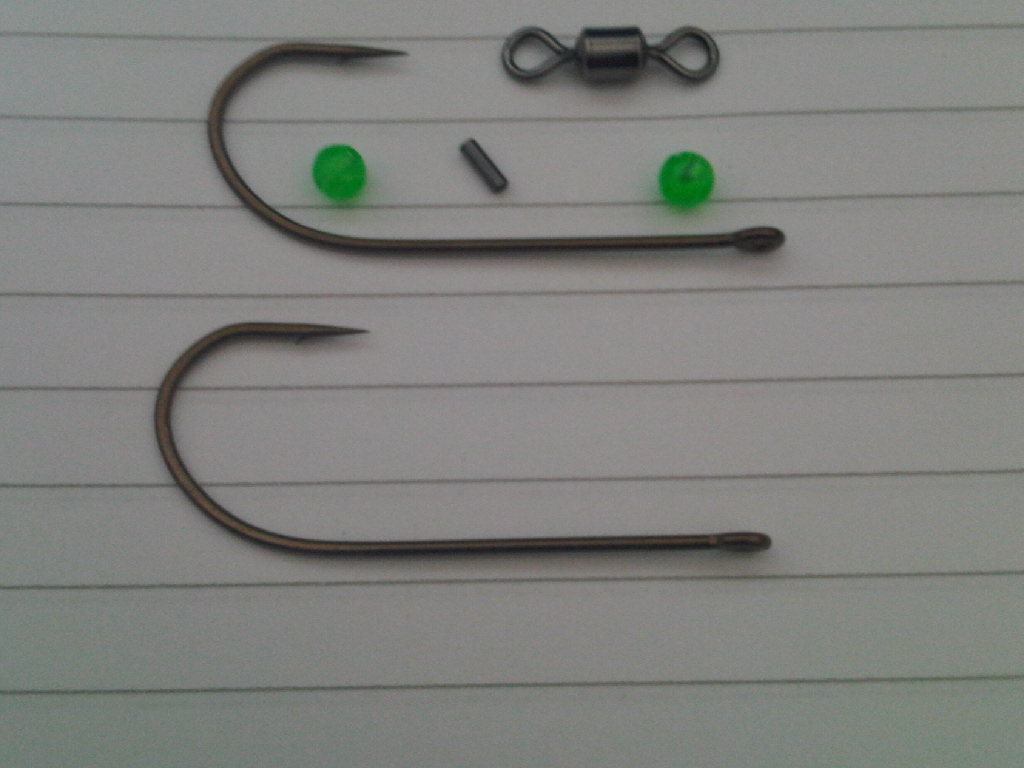
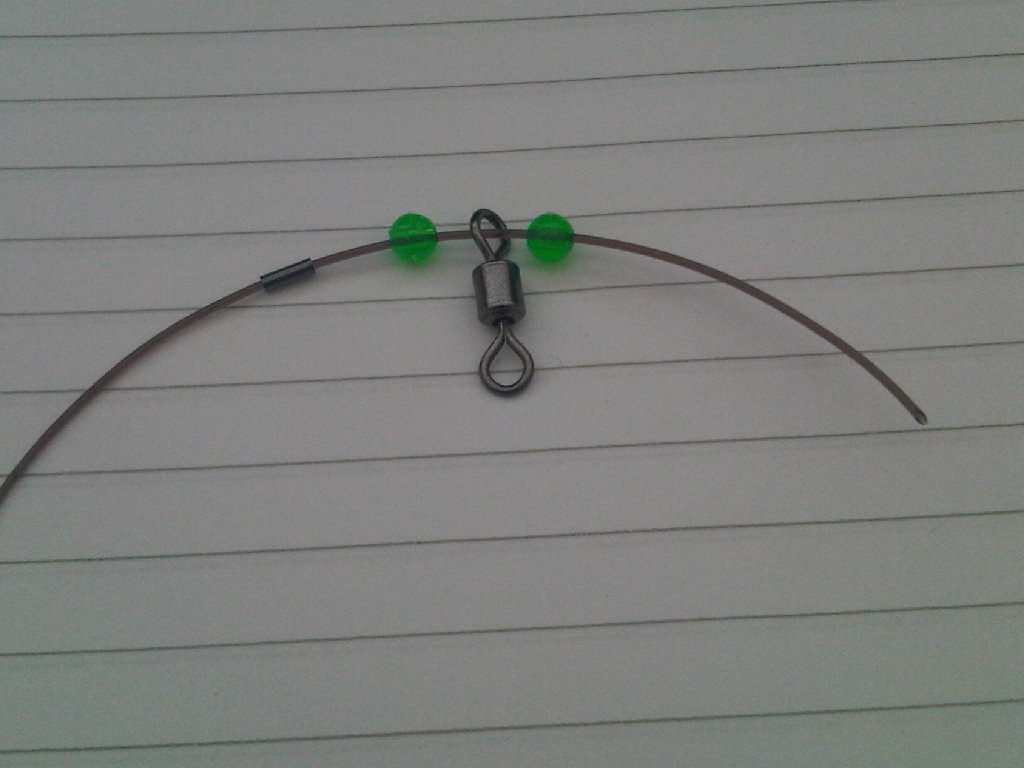
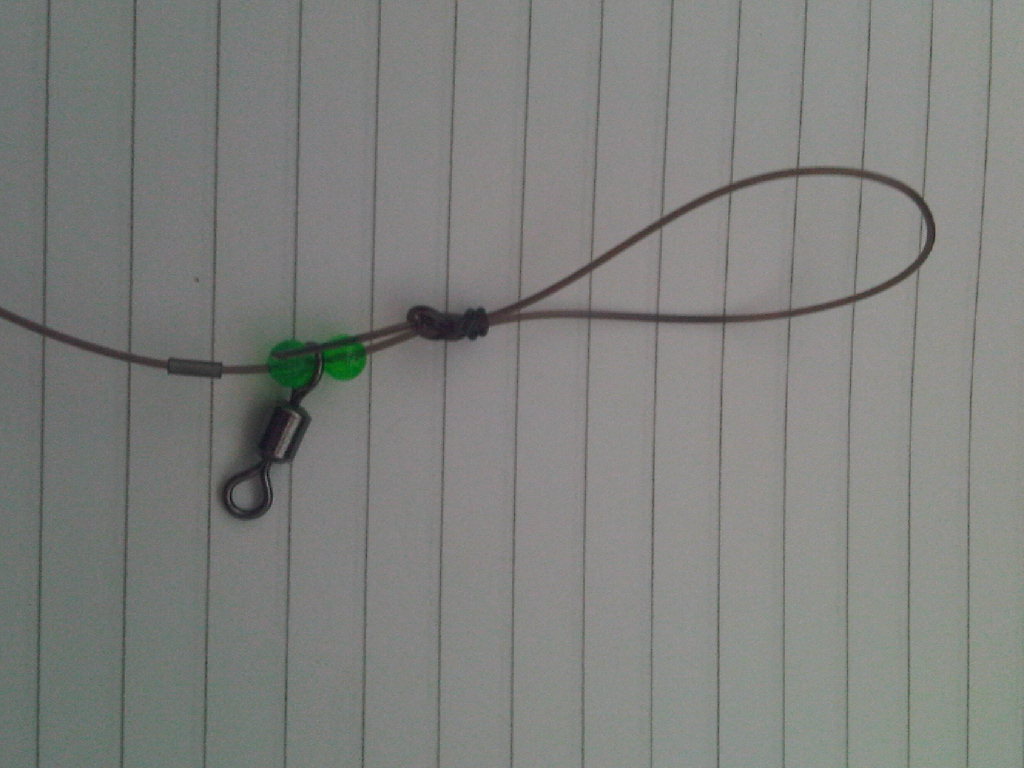
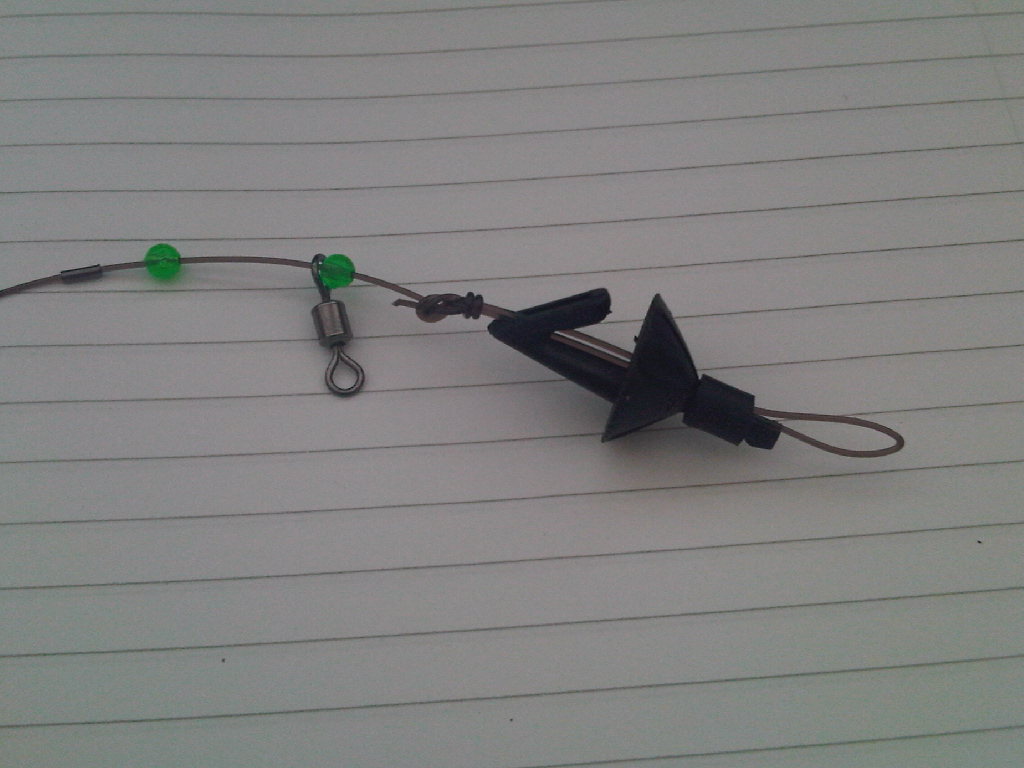
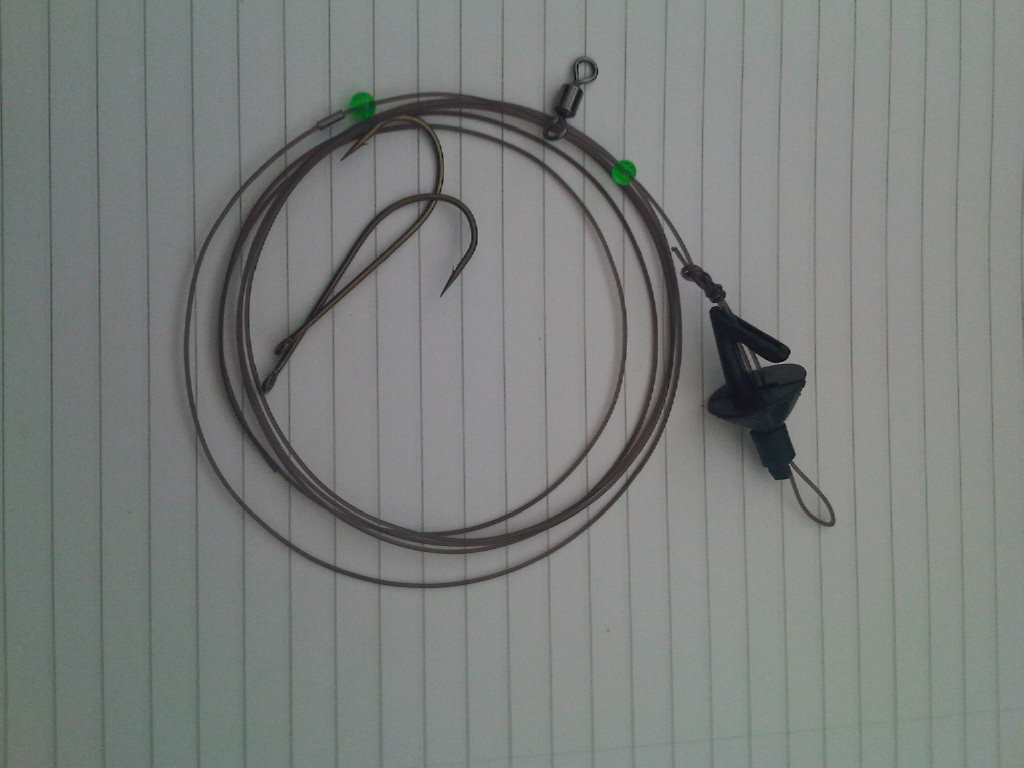
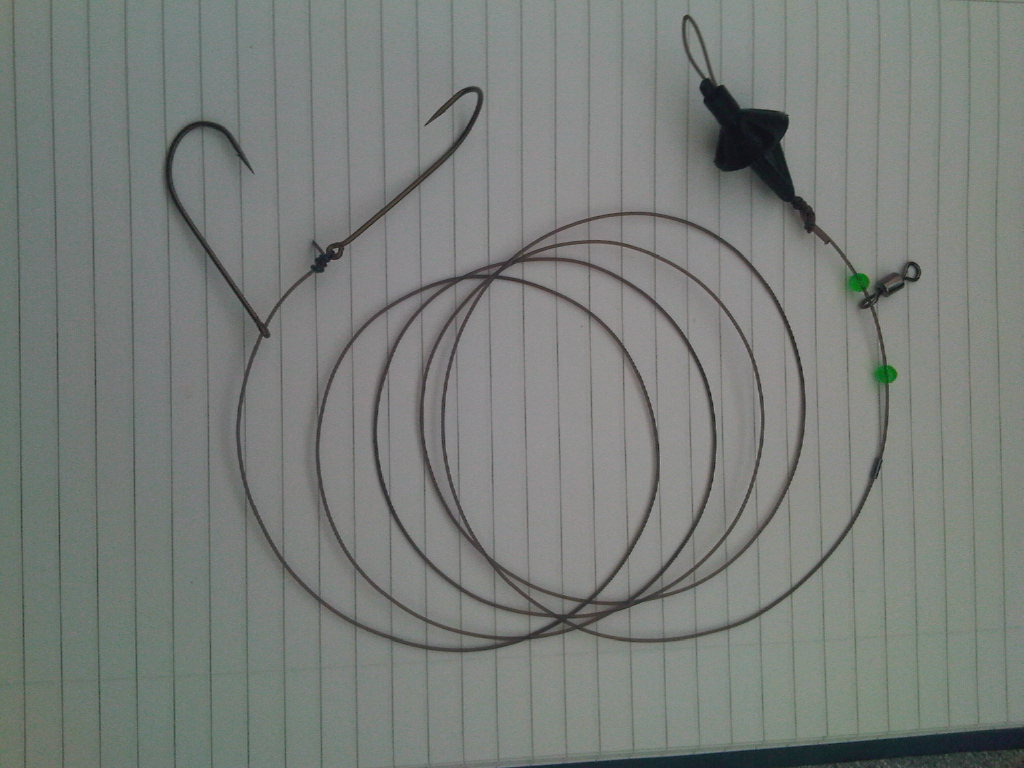
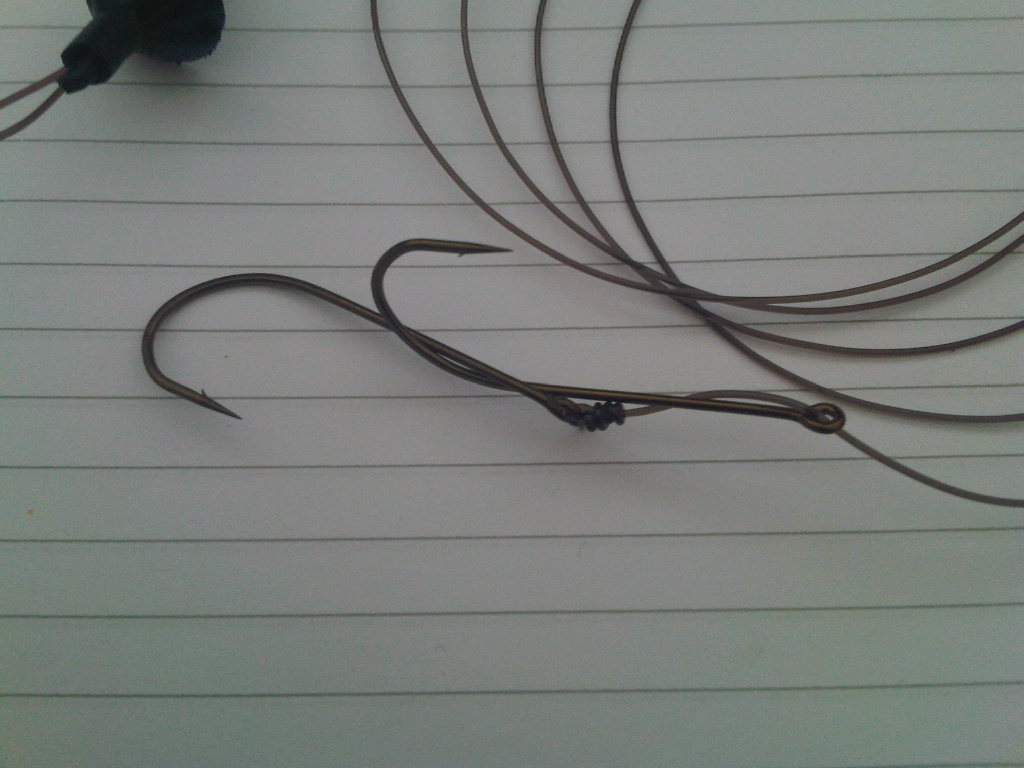
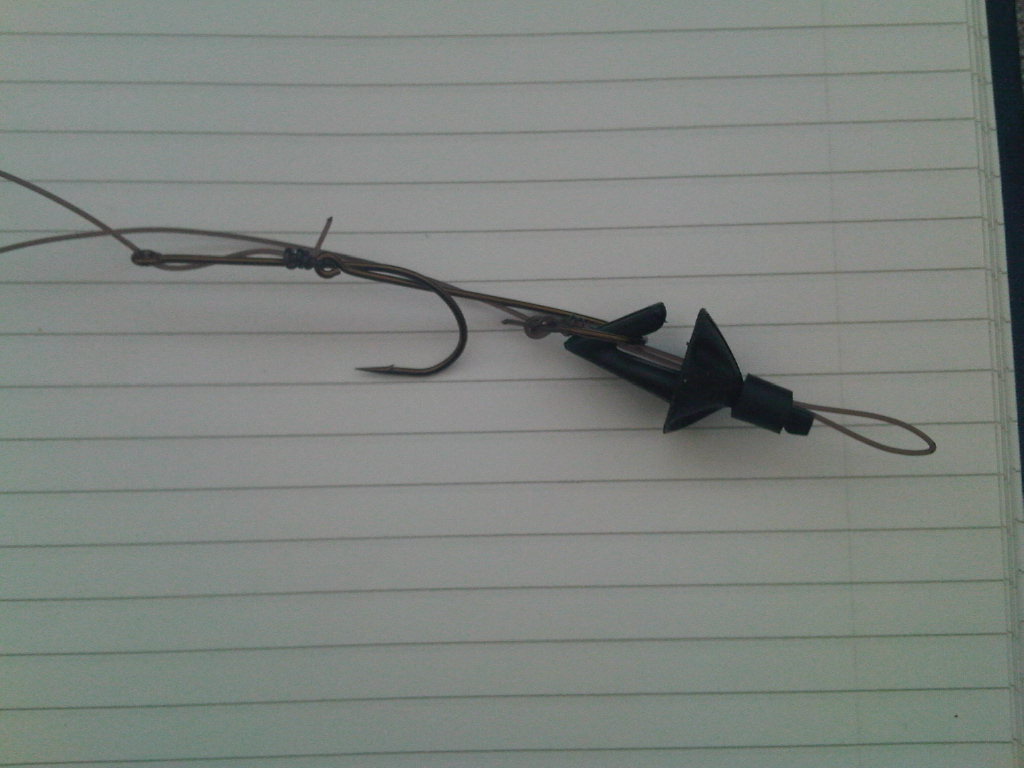
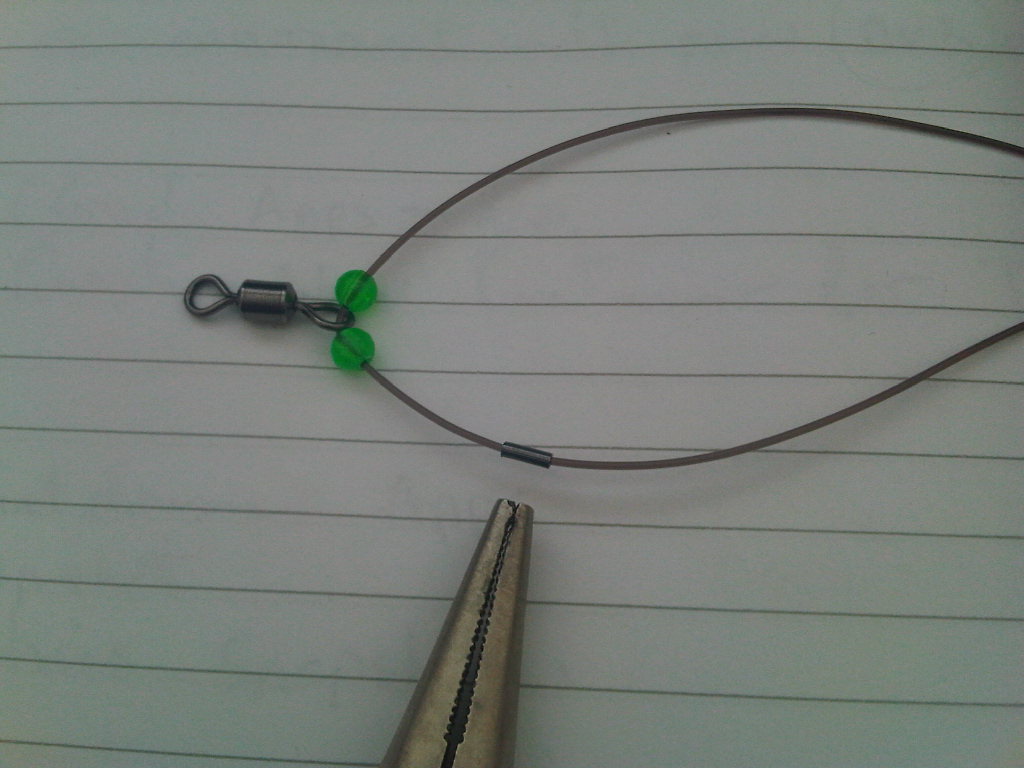
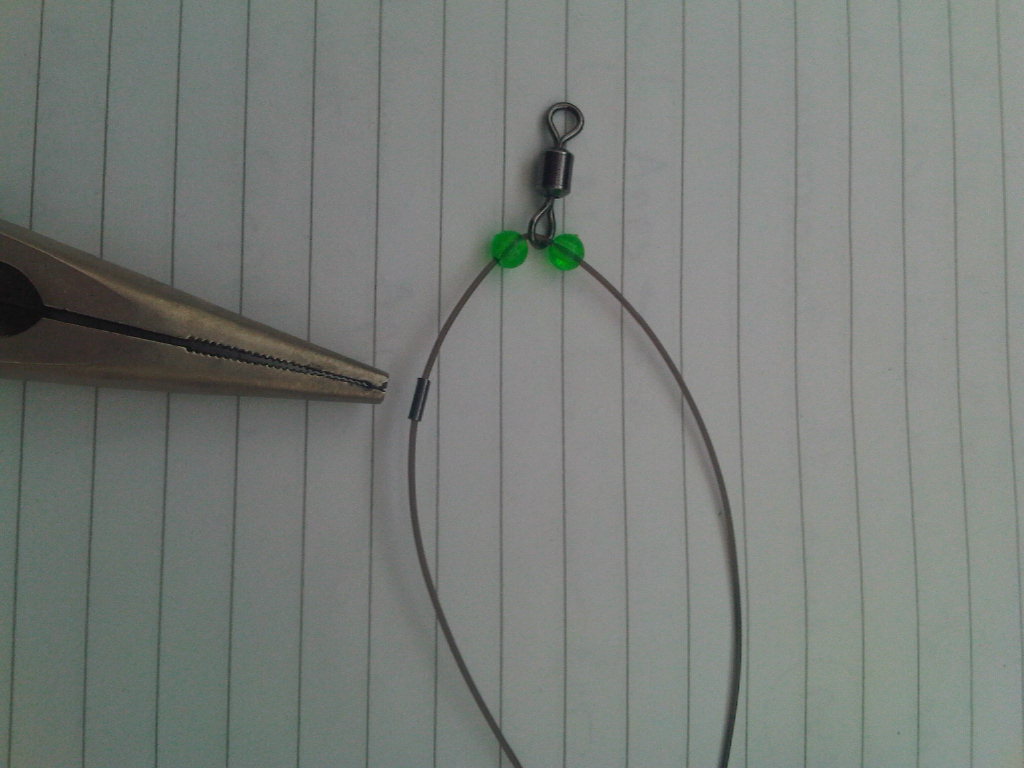
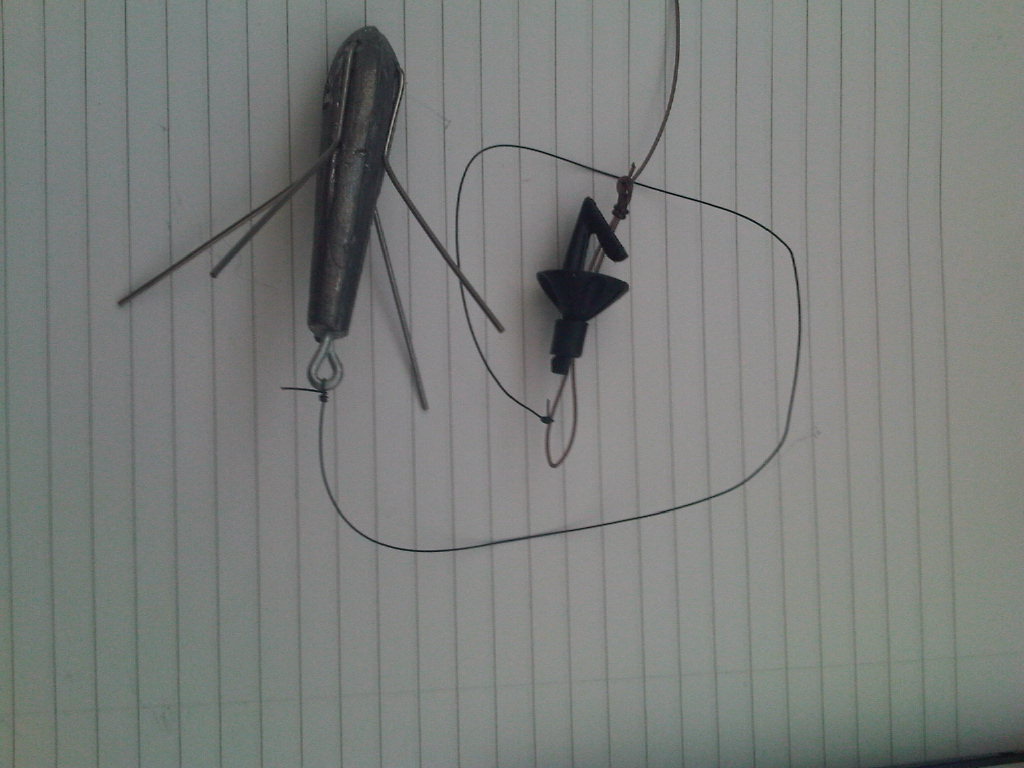
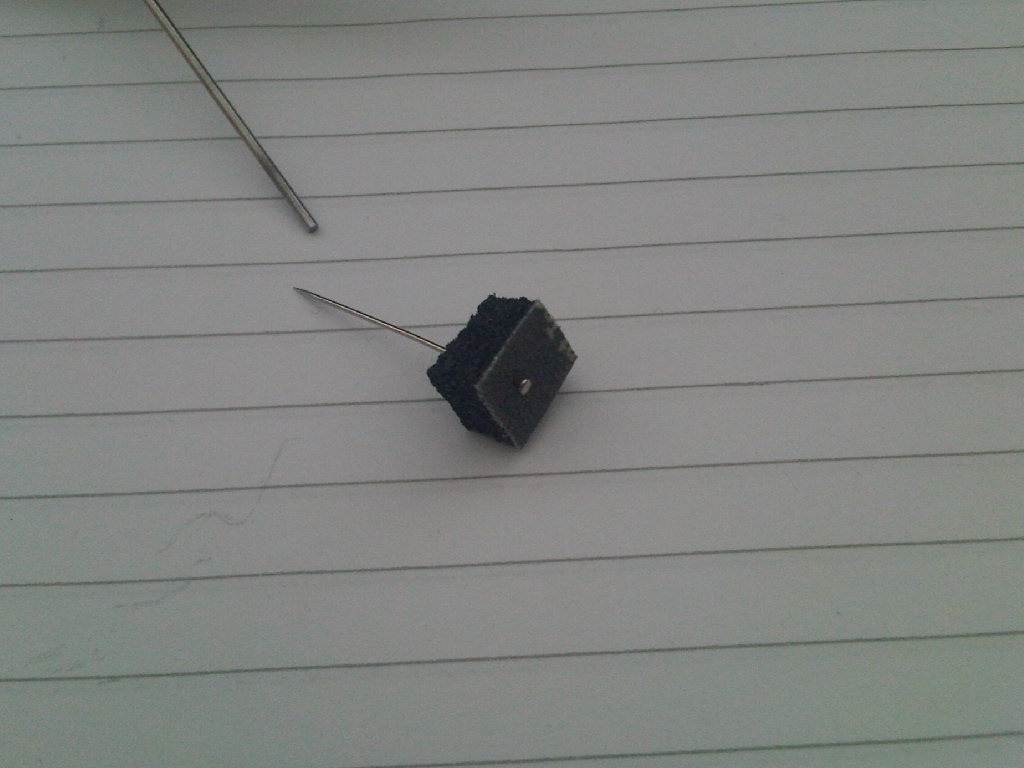
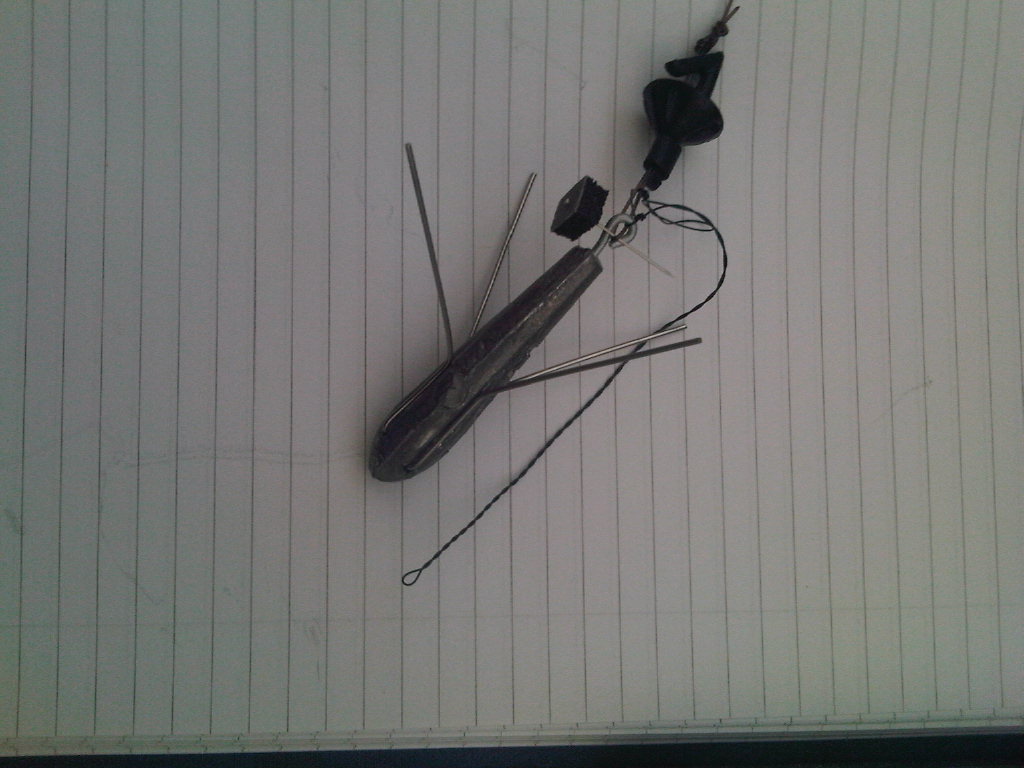
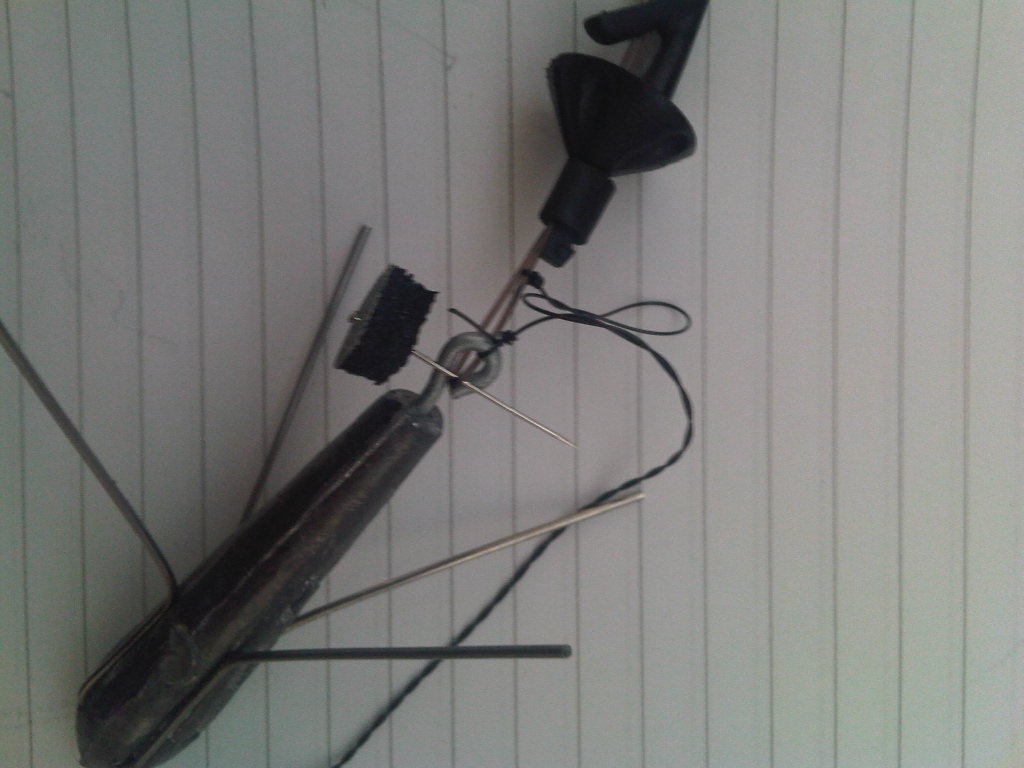
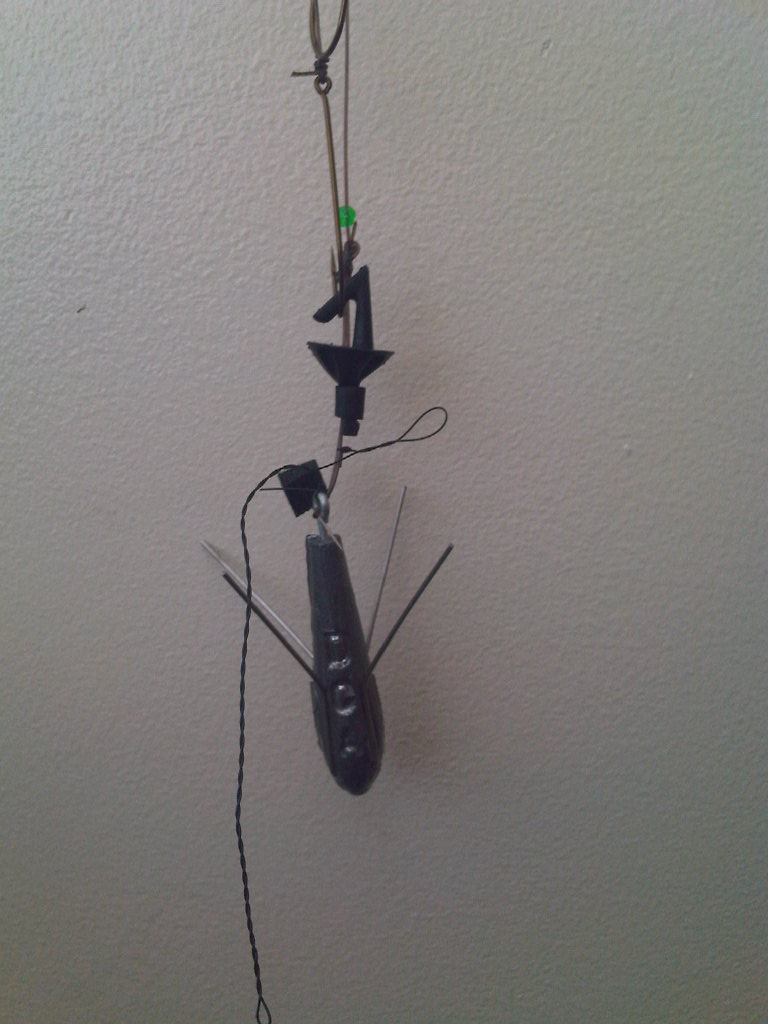
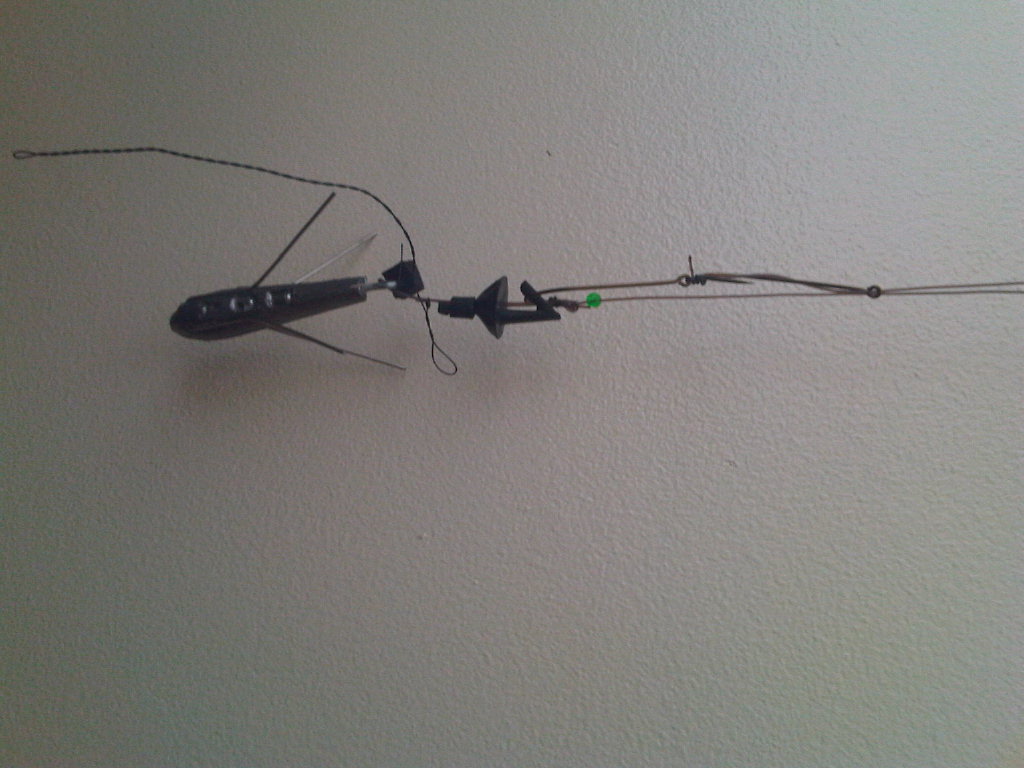
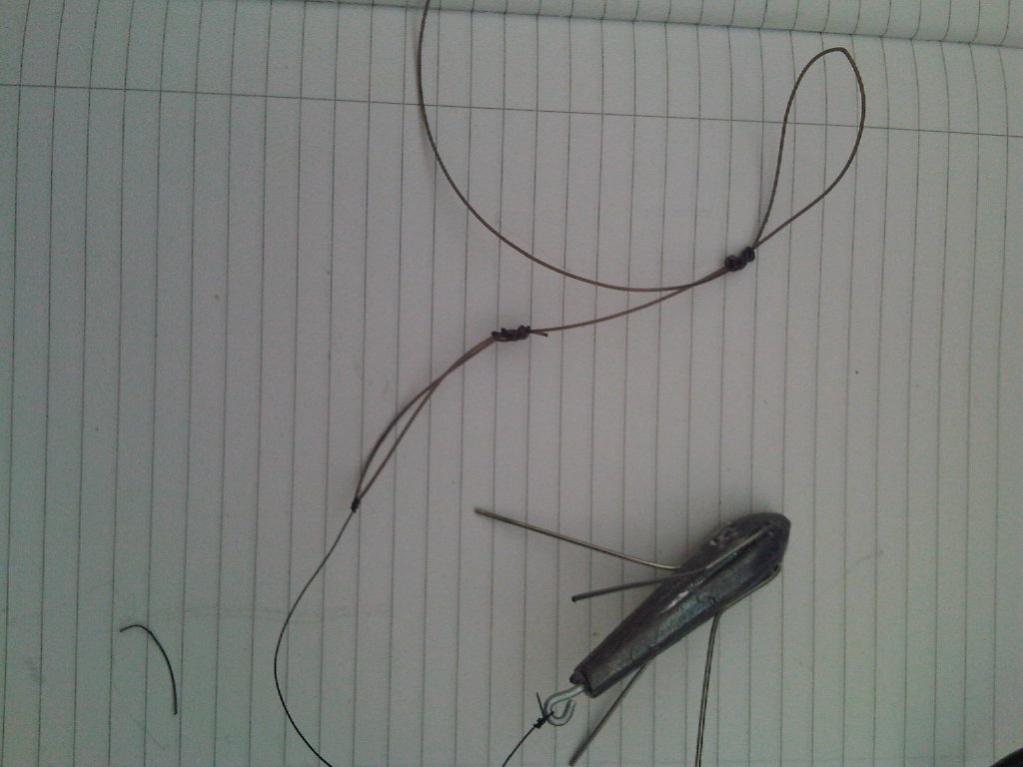
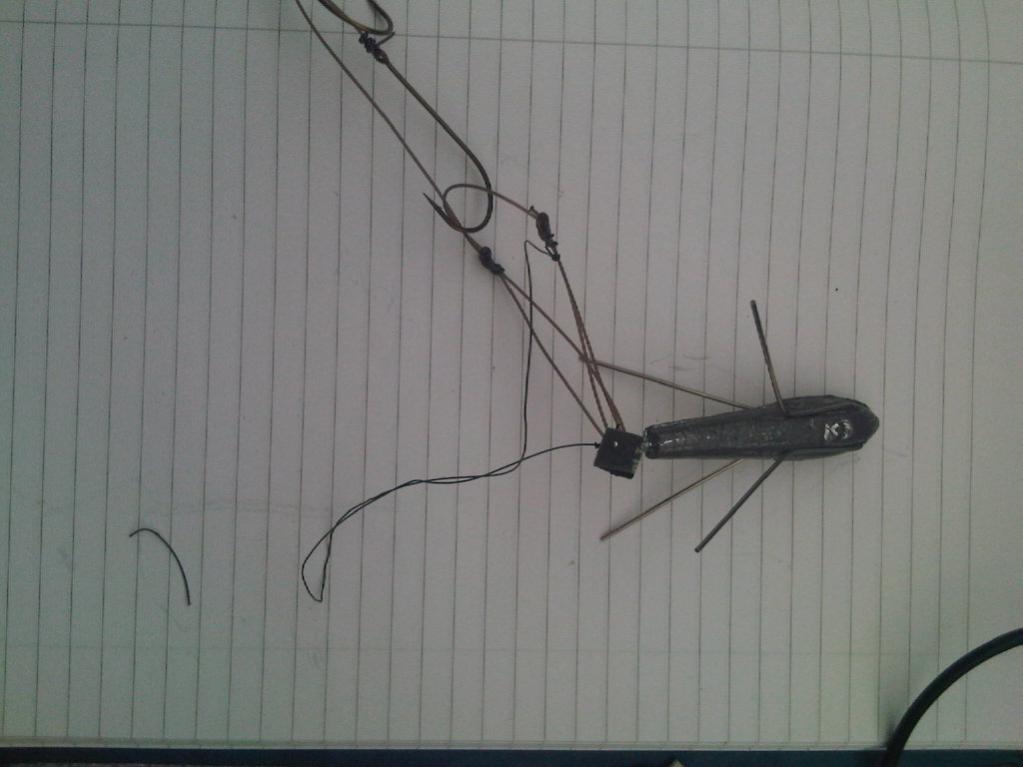 ]]>
]]>Penn Parts & Servicing Technician
Ewen Hill
18 Morar Place
Renfrew
Renfrewshire
PA4 9DP
0141 562 7871
07738 057 831
e.hill370@ntlworld.com]]>
Theres a lot of style u can use this plastic lure.For me i like to rig them weedless....either "exposed" or "skin".For weedless presentation theres a special off-set hook and jighead.....
"Texposer"

Skin

The softies....

The hook and jighead

Hitch hiker



Weigless Rig
Some plastic are salt impregnated so they tend to float.Rig weightless and u can walk them on the top of the water.U can put weight insert to make them slowly sink and suspend.Theres a specially made nail sinker which can be insert to the plastic lure,for me i just use a piece of lead and shape them in 1cm long and 2mm thick and use them as an insert.

Drop Shot
Just cast them out....and u can shake them back slowly in between the crank.The key is to keep in contact with bottom.It can be shake statically in one spot suspected fish holding area.The hook is tied using palomar without triming the tag end.Theres 2 type of rigging....weedless or using circle hook or any wide gape short shank crab hook.The length from the bait to the sinker is depend on what height u want the bait to be shake.Shake mean only a small amount of rod tip is move and keep contact with the bottom.Suitable when fishing on deep marks and high on the rock.The sinker usually attached by threaded in the line through sinker and secure by a knot.In case u got a snag....u wont loose the whole rig.

Drop Shotting rig with circle hook.

Drop Shotting rig with offset worm hook.
Can be fish using jig head or just by a hook weightless.Some times the weight is inserted on both end of or only one end of the lure.A hook or jig head is thread at the centre of the bait/lure.The rig can be shake in the water colum and be drop back to bottom and can be shake up again.The position and how many weight is inserted in the lure will determine how it fall to the bottom after each shake.
Wacky Rig with jig head

Wacky rig with insert weight.

Texas Rig
The head should be a cone sinker.But i found its ok to use drill bullet as substitute.You can use bead with stopper knot to stop them from sliding freely or u can use a tooth pick to jam the sinker hole.The other variant of this is by sliding in the glass bead before u sliding in the tungsten sinker and the sinker let free to slide on the line.This method will make it more attractive since the clacking sound produce by the sinker and the glass bead bumping on each other each time u shake it or twitch it.
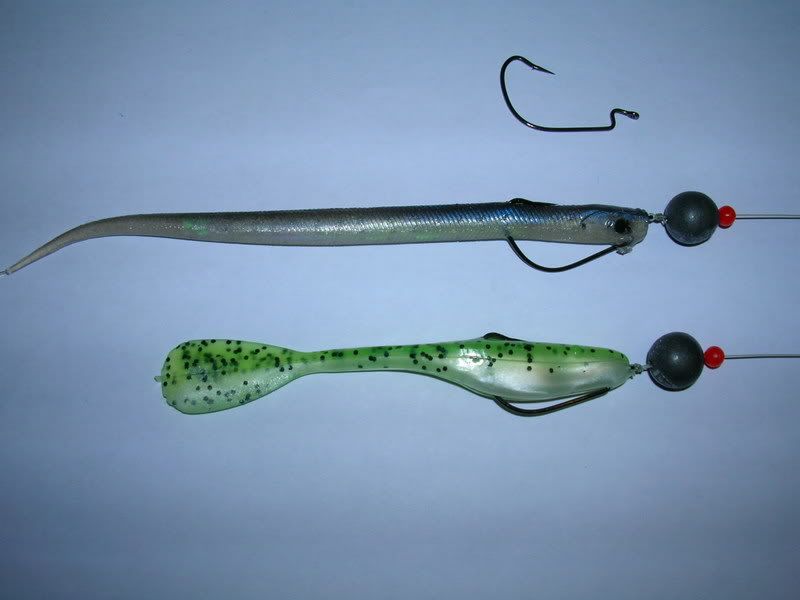
Jighead

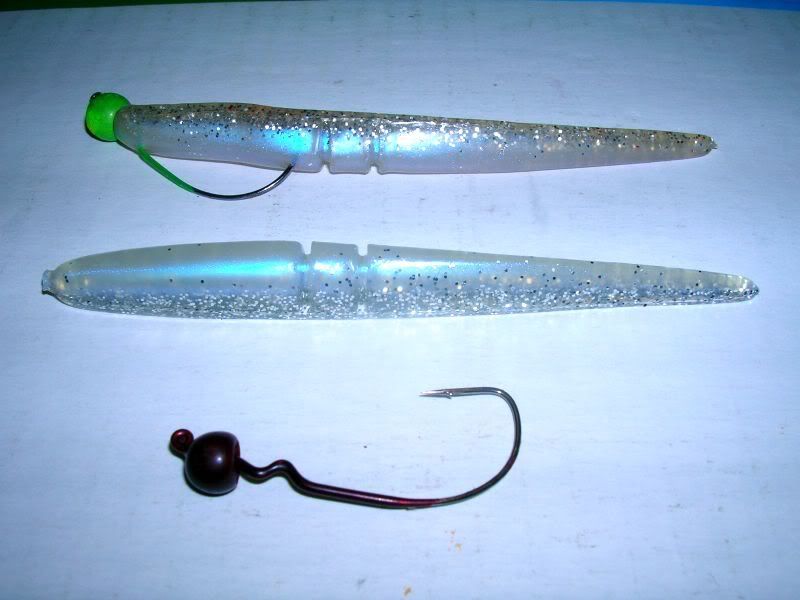
Just a reminder....weedless and normal non-weedless presentation both have a pro and cons.....both are not superior again each other....why i highlight most of the weed less presentation here is just because most of us shore angler here are dealing with the kelp and weed infested area wch are consider the best place or structure that the fish love to hang on....the normal non-weedless rig will ensure the best hook up compare to the weedless.....but in the rough kelp terrain,you will easily fed up of keep on getting hook up and stuck to the weed and kelp due to the expose point of the hook.....in open water and sandy area there is no point of using weedless rig and sacrifce the positive hook up.Use them wisely according to the kind of place that u fish.
This method also can be use from the boat and of course with heavier jighead....on the strong current at anchorage ,with a decent size of jighead,i love to cast them up tide and let them drift at the bottom with a bum on the bottom once in a while and still keeping in touch with them.....experiment with weight,too heavy and the action will become stiff.....too light ,and it will drift,take time to touch bottom and and you will lose contact with the bait.The use of fine diameter braid will ensure more fun using them.Why using jig head and this kind of method while u still can use a paternoster rig with a heavy lead???For me the sensitivity and the sensation of feeling the fish at the end of the line with direct contact.With the paternoster method u still can feel the sensation but not as sensitive as the direct contact of this method....the heavy lead will hampered the feeling and there will be no advantage to the fish as other than fighting the fishos.....it also have to drag a heavy lead around.But in some situation wheres its nearly imposible for the jighead to get to the bottom,the paternoster will rules.Use them according to the fishing scenario.
As far as i am concern....plastic lure have been around for a long time....but dont make it well due to the skeptical view from most angler worldwide.They re more popular in Large Mouth Bass fishing scene.Most of them are developed in the LMB tournament circuit wch are popular in States,Japan and even now in spain and france if i am not mistaken.Its then adopt by saltwater angler and slowly make their way on SW scene worldwide for the past few years.Make a boom in australia for the past few years taking on most salwater fish like bream,barramundi,flathead,mulloway and even an offshore snapper.
Most of them are depend to the angler to impart the action.Not like most other lure wch u just have to crank it and have their own inbuild action.U have to fish them slowly and should have an imagination on how its work in the water....twitch...jerk....let it fall....
They wont make sure that u will catch fish.Its just they re one of the versatile and fun type of bait to be use.If you like to do experiment and have some fun,i highly recommend them.Like other kind of lure the key to success is persistent and fish hard then u will learn the secrets of it.
Btw....heres a few interesting video on how they move in the water.....cheeerrrsss...
Click the video icon....
http://www.tacklewarehouse.com/descp...BURR-BHFB.html
http://www.tacklewarehouse.com/descp...STRX-BTBF.html
http://www.tacklewarehouse.com/descp...BO-RW45ST.html
http://www.tacklewarehouse.com/descp...NNY-SBSE.html#
http://www.purefishing.jp/product/be...no_sinker.html
http://www.purefishing.jp/product/be...ead_wacky.html
http://www.purefishing.jp/product/be...p/08/neko.html
http://www.purefishing.jp/product/be...down_shot.html
• sunlight on an average day ranges from 32 000 to 100 000 lux
• TV studios are lit at about 1 000 lux [i.e. 1000 lumens per square metre]
• a bright office has about 400 lux of illumination
• At sunset and sunrise, ambient outdoor light is also about 400 lux (if the sky is clear).
• moonlight represents about 1 lux
• starlight measures a mere 0.00005 lux
Lumens measure "luminous flux". This is a measure of the total number of packets (or quanta) of light produced by a light source (e.g. a globe or fluorescent tube). This is the “quantity” of light emitted by the light source. The purpose of lux is intended to tell you how many lumens you need given the area you are trying to illuminate. Achieving an luminance of 500 lux might be possible in a home kitchen with a single fluorescent light fixture with an output of 1200 lumens. To light a factory floor with dozens of times the area of the kitchen would require dozens of such fixtures. Thus, lighting a larger area with the same number of lux requires a larger umber of lumens. The difference between the lux and the lumen is that the lux takes into account the area over which the luminous flux is spread. 1000 lumens, concentrated into an area of one square metre, lights up that square metre with an luminance of 1000 lux. The same 1000 lumens, spread out over ten square metres, produces a dimmer luminance of only 100 lux. Now to the issue of watts vs lumens produced. This is a difficult one because the wattage of a light source refers to the power consumed to drive the source while lumens refers to the brightness of that source as the human eye perceives it. The wattage of course would be the sum of the heat generated as well the energy of the light emitted.
So, what of LEDs?
“Wattage” of LED Lamps
When evaluating LEDs we are often asked for the wattage of LED lamps when what is really meant is: “How bright are they?”. one can only compare the brightness of the various light sources on the market by knowing the number of lumens they produce.We have all developed expectations about the how bright a 20-, 40-, 60- or 100-watt bulb should be and we tend to apply that frame of reference to LED lamps. To clarify the relationship of watts to light output and LED bulbs, we talk about the number of ‘lumens per watt’ (lm/w) that the device produces. Incandescent bulbs are very inefficient and only generate around 12 lm/w, whereas LEDs and halogen sources now have almost equivalent efficiencies of 40 lm/w. Some fluorescent tubes generate 60 lm/w (which is where LEDs are predicted to be next year!) It is always better to talk about lumens (and lux required) than watts when it comes to lighting decisions. Just to make things a bit more complex, lumens relate to the eye’s sensitivity and depend on the wavelength (colour) of the light. The true point to measure lumens is at 555nm – yellow green – which is where the eye is most sensitive. White light is a mix of many colours and to get a proper measure of ‘brightness’ is a complex process involving integration of
lumens over each colour with an ‘eye sensitivity’ weighting factor ….
Another point to bear in mind is that unlike incandescent light bulbs that illuminate in a 360-degree spherical pattern regardless of the shape of the bulb, LEDs depend on the shape and composition of their lenses and package structure to direct the light where it is needed. When we illuminate an area with a ‘spherical bulb’ source, even with a reflector, only a small proportion (perhaps 50% at best) of the lumens are delivered as lux to the surface we are lighting – the rest is lost With LEDs, properly applied, over 80% of the lumens can be directed to provide lux at the surface. That is why LEDs can seem such bright pinpoints when you look at them.
So LEDs are as bright per watt as halogen and nearly as bright as fluorescent – and when properly applied they can deliver more lux per watt than either of these onto a surface such as a display case floor.
Beginers lure guide link.
Googan (gugunn)
The googan is a beginner,some one who has just started,they are at a early part or stage in there learning about all thing’s fishy,you cannot move up from the status of googan,unless other’s around you, tell you that you are no longer a googan.
Translated to real words,he’s the kind of bloke who having just purchased his first spinning rod/reel combo proceeds to use it upside down and think’s his reel double’s as some kind of kitchen utensil.
So if you fit in with this type of guy,here’s a little help.
crankbaits,minnowbaits,jerkbaits,stickbaits....... ...............
christ,no wonder for the beginning lure angler it becomes a complete nightmare as to what's what in the world of plastic and wooden lure’s.
So how you going know which one to choose, when we make the task of picking the right one even harder,by having even more choice’s like
topwater,diving,sinking,lipless,rattling,jointed
once you've run the gauntlet for that you can pick a colour, of which there seem’s to be a a zillion.
now choose what lenght from 2" - 8"+,then if your not out of time you can start fishing.
ok,let's try and make it a little simpler if we can.
Let’s start by trying to clear up a few things first to help with the headache
minnowbaits,jerkbaits and stickbaits
these are basically all from a generic gene pool,they all tend to be rather thin,long bodied lures,the only things that change is obviously lenght,weight,buoyancy,lip shape,angle,how many sets of hooks,all of these thing also effect the way the lure swims.
With these type’s of lure you’ll probably do better in clear/lightly stained water as a basic guide rather than heavy stain,because of a lack of vision from the fishes point of view,there slim profile won’t move much water compared with the larger profile of the crank bait’s,for fish to pick up on there lateral line’s.
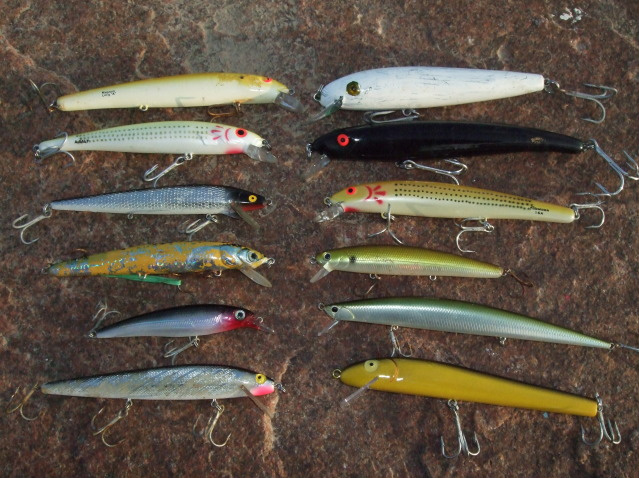
lures from top left down
bomber 16a,bomber a salt,hellcat,mega flash,rapala x-rap,rebel,rebel wind cheater,bomber 17a,bomber 16a,lucky craft,duo tide minnow,unknown.
crankbaits
these tend to be the short stubby guy's that you may have seen on the freshwater bass fishing shows.(that's the lures,not the
angler's
these lures come in mainly small sizes,upto 3"-4" in lenght,tend to be round or flat sided,roughly twice as long as they are in height,designed for the ability to fish in and around structure/cover because of the angle the lure works,the body and lip tends to help keep the hooks from snagging up all the time, also good for giving a larger profile bait in dark/stained water condition’s because the size of the body will move more water compared with the thinner profile of the minnow bait’s.
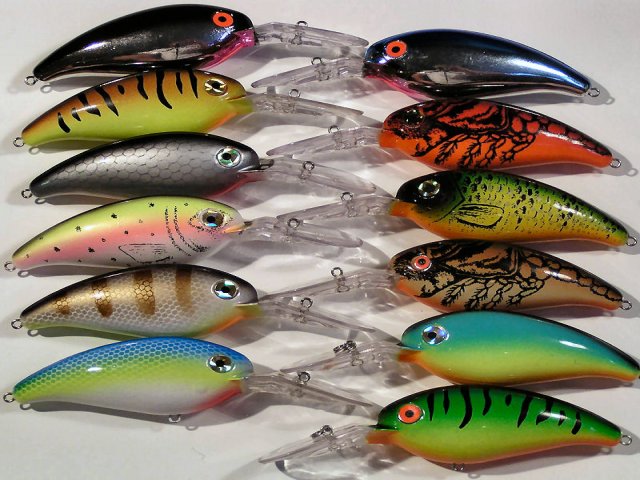
topwater
surface lures to chose from,poppers,sliders,wtd(walk the dog) style and a billion others i've forgotten about.,
these can be good in clear and stained water condition’s,as fish will pick up on the comotion made on the surface and should be looking up to see the bait silhouetted against the sky,which will give the best view in stained water, er on the less is more in clear water condition’s.
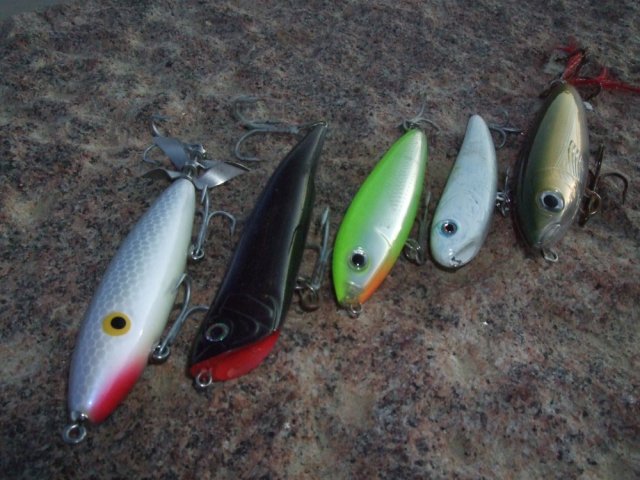
luhr jensen peacock bass,yozuri mag slider,rapala?,lucky craft sammy?,rapala x-rap 13.
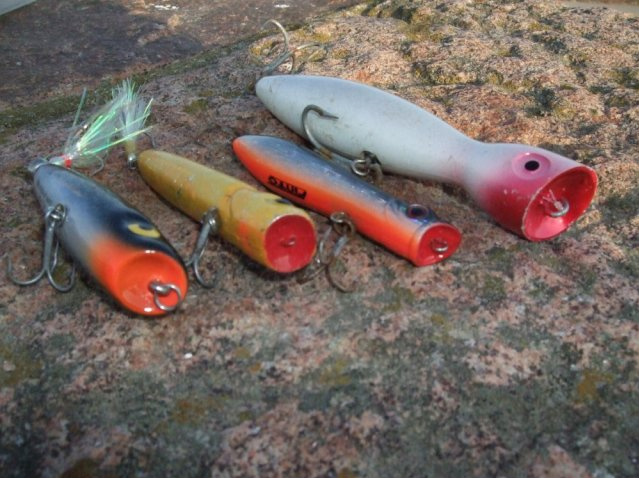
luhr jensen p.j.pop,storm chug bug,pinto,superstrike little neck popper.
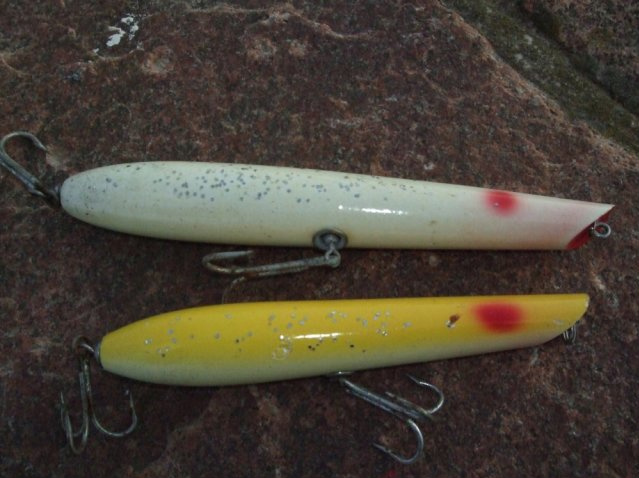
pencil poppers,both gibbs
Lipless
Sinking Lipless lures are great for covering lots of water quickly and all workable depth’s too,they also don’t tie you out like other lures from repeated casts because there’s no lip to build resistance against,good for most condition’s.
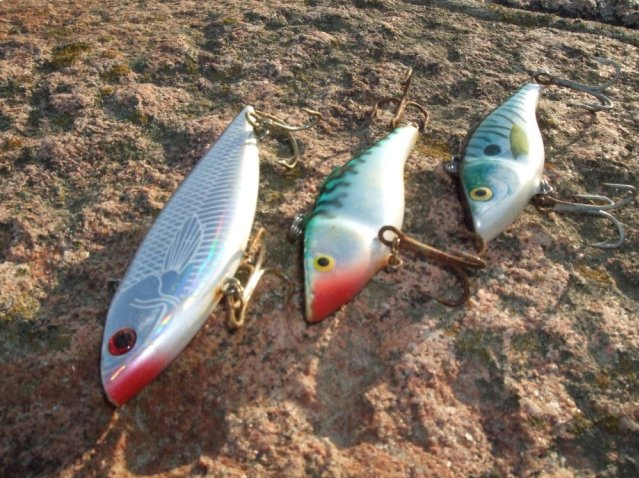
unknown,rapala rattle L,rapala rattle L
A few other style’s of lure’s
Needlefish

from left to right
superstrike,superstrike,lifishvt,gibbs,choopy,mike fixter.
Needlefish lures come in a variety of shape’s,length’s ,weight’s and the way there weighted adjusts how they cast/float or sink and at what angle they’ll swim,most true needlefish cast like a bullitt,remember just because some lure’s sink,doesn’t mean it can’t be used as a top water lure if you retrieve a little faster and keep your rod top higher while doing so.
Metal lip swimmer’s
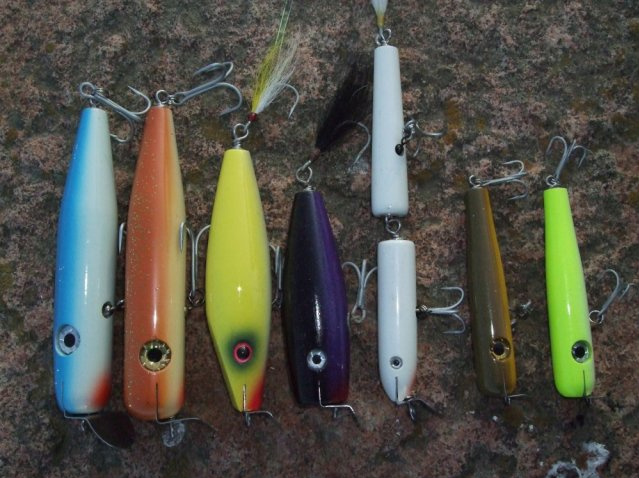
left to right.
tattoo 2oz swimmer,tattoo 2oz swimmer,eel punt,choopy,tattoo everlasting eel,tattoo 1oz swimmer,tattoo 1oz swimmer.
Great for making lip adjustment’s quickly for depth and wobble by bending the lip either up or down,you can also adjust by bending the line tie,these lure’s are great at portraying larger than normal bait,s like mackeral,mullet,etc,they tend to have a more relaxed wide wobble and more roll than the faster tight action of the smaller minnow bait’s,in the right condition’s these lures work well, and hang tough in hard current,but most don’t cast well due to there fly like a dead parrot syndrome.
Darter’s and bottleplug’s
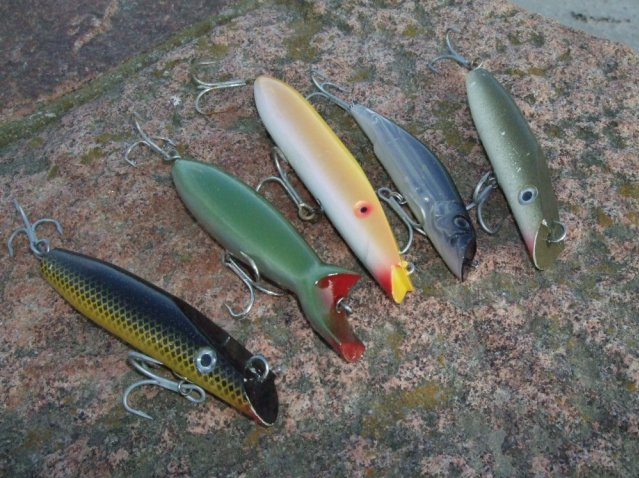
choopy darter,super strike bottle plug,superstrike darter,yozuri mag darter,choopy darter.
These are lure’s that work well when fish are hitting bigger baits like squid,they do there best work in current where they have a erratic action,where they’ll move 1-2ft one way then dart the other way when worked right.
Jointed lures
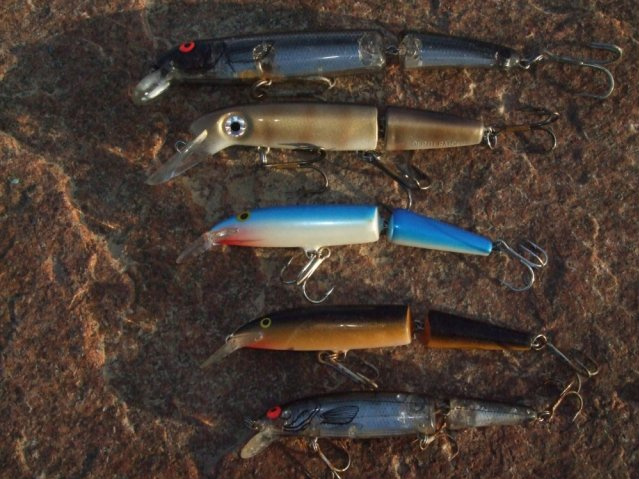
bomber 17a,joe bucher depth raider,rapala j13,rapala j13,bomber 12a?.
Jointed lures,another lure that doesn’t cast well,but can excell at producing that fast moving bait look,but without hardly moving,they also have an in built rattle when the two halves of the lure’s collide,the rapala j range of lure’s are still good fish producer’s today as is the sliver.
How to help choose the right lure:
A basic start point:
very buoyant tail up/nose down lure’s,these are a good choice when fished over weed,because they’ll back them selves out of the cover.
Low buoyancy lures,tail up/nose down, good for fishing over rocks/boulder’s,use a slower retrieve so you can feel the line and lure bumping over the cover so you can release the tension on the lure to allow it to back out if the lure get‘s caught up,also better for fish that aren’t feeding that aggressively either.
Suspending type lure’s,are good to use over clean ground,or with not so much cover because they tend to run through the water more horizontally so are more prone to hanging up,good to use on fish that require slow retrieve’s and plenty of long pauses to get a strike.
Sinking type’s are just that,use over clean ground/deeper water and count them down,if your using over rough cover,then expect to loose a lot of money.
ok,hopefully you now know some of the type's of lure out there,so how to choose which style.
try and divide your fishing area into depth zones and structure/cover to help you with what lure to choose.
zone 1) 0-6ft depth:
zone 2) 6-12ft depth:
zone 3) 12-18ft depth:
zone 4) 18ft +…
How can we tell which lipped lures will dive to what depth’s.
You can get a idea from the shape of the lure and the type of lip/shape for how it’s going to perform.
Very basic diagram of lure lip angle’s
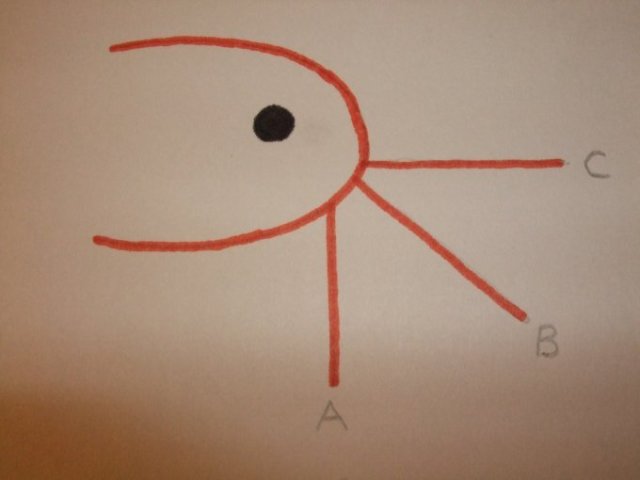
The angle the lip is at “A “ will give the shallowest dive,but a very wide wobble.
The angle the lip is at “ C “ will give the deepest dive angle but the least amount of wiggle.
“ B “ will give good depth and a nice wobble,the best of both world’s,remember that this is only a basic guide line,a lot of other thing’s come into play as well.
looking at the angle the lip is at will give a idea of the depth attainable,buoyancy of lure also play’s a major role.
now don't just rely on what the attainable depth say's on the box that your lure comes in either.
The depth of any lure is governed by
1) the distance it's cast
2) the angle/style of the lip/bib
3) the diameter of the line
4) speed of retrieve
5) angle of rod
6) buoyancy of lure
so just because you have a lure that can do a certain depth,don't be completly locked into the fact it can't do anything else,like swim deeper ,shallower or with a little more roll with a little thought like modifing it's weight, retrieve speed or line diameter.
knowing what depth each of your lures will go to, with what line and retrieve's your using will be a great help in being able to fish close enough around cover to provoke strike’s from fish but without losing every lure in your box.
so having looked at the lures above,you could use all of them mentioned for zones 1,2 & 3,only wind,current,surf,waterclarity,structure /cover dictates,which one’s will work the best for the condition’s.
zone 3,becomes a little differant,if your good,you maybe able to pull fish up from this depth and a little more with top waters and jerk baits but it's going to be hard,
so what do we have left ,deep diving crankbaits or deepdiving minnowbaits,weighted plastics and jigs/metal to get down to those sort of depth's.
Zone 4)
chance's are you won't find a jerkbait that will work well beyond 10-12ft,because if you alter it buoyancy to much you won't get any hang time which is what these were developed for in the first place,so that's out the window,deep divers won’t get to that depth without the assistance of extra weight.
You’d be better off using metal or jigs etc to work this depth of water correctly.
structure and cover
both used by fish and are very differant! here's a quick introduction.
structure
whether hard (rock) or soft (sand) is basically the topography of the seabed,these consist of points,holes,bars,rises(underwater islands)flats,cuts/trenches.
cover,
anything fish can use to hide in for protection or to ambush prey,this includes all type's of weed,mussel poles,loose rocks,boulder’s,white water and coloured water condition’s,etc,etc.
either one on it's own will hold fish at some time,but when you have good cover on good type's of structure,in an area that has current you've got some good fishing.
Colour choices
This comes down to what the fish want on the day,that said this is the last thing that comes to my mind when choosing a lure,for me action and profile comes first,that’s my choice.colour wise I like to have colour’s that come under the guise of light and dark,but for other’s colour choice is high on the list.
A basic list of colour’s for water condition’s
Clear water: white,blue,chrome and natural,most colour’s will work in clear water,because the visibility is good,also the clear see through lure's work well.
Lightly stained: green’s
Heavy Stained water: orange,yellow’s chartreuse,gold’s, work well,but also the dark colour’s like purple’s and black stand out well,lures with these colour’s and a little flash may help.
And even though red is the first colour you loose to depth in clear water,it’s a good colour to use in muddy water condition’s.
Light condition’s
You can also choose by light condition’s,
low light:
darker colour’s will stand out more especially if they have a little flash on them as well. also natural fish colour’s.
Bright light condition’s:
bright colour’s,like orange’s,yellow’s,chartreuse anything with a lot of flash.
At night most if not all colour’s will be just different shade’s anyway.
Rattling lure’s
Again very difficult to put anything down in hard,fast rule’s,because people catch in clear water and very stained water,bright hot sunny day’s and the darkest of night’s,this one is for you to figure out,if you want a starting point,then bright daylight,calm,clear water condition’s then no,dark,murky looking water,dark,pitch black night’s with swell,surf then yes.
Oh buy the way Once you’ve learn’t and memorised all this,do yourself a favour and throw it all out the window,because fish being fish don’t play by the rule’s.